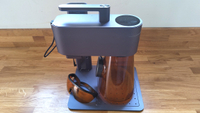The best laser cutters and engravers for at-home DIY and crafting
Cut, score, emboss, or engrave a variety of materials with ultimate precision using some of the best laser cutters and engravers.
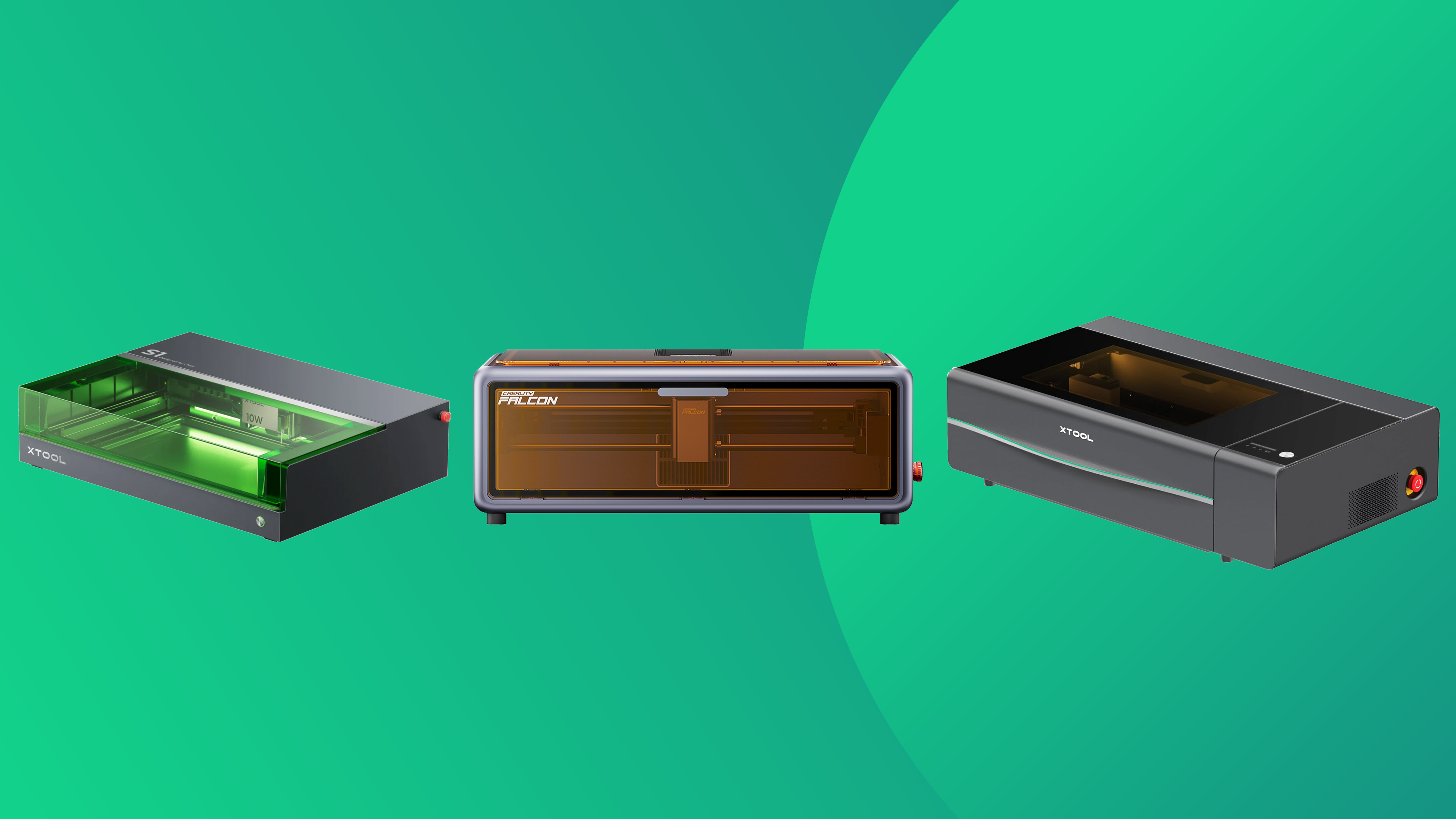
Investing in one of the best laser cutters and engravers can open up new avenues to transform your digital designs into beautiful products. Whether you're starting up a business or working on DIY projects, these devices are becoming much more user-friendly (and more compact, too) and can work with metal, plastic, wood and glass.
I've personally tested and used dozens of laser cutters and engravers, and the top brand I recommend for all types of laser-oriented projects is xTool. Our top pick is the xTool S1 model for its versatile performance and beginner-friendly format. However, there are plenty of other laser manufacturers out there that cater to all budgets, and I've curated this list to reflect the best ones I can confidently recommend.
If you rely more on cutting rather than engraving, see our top picks of the best Cricut machines, or if you prefer an all-around crafting machine with multiple uses, check out some of the best vinyl cutters and best Cricut alternatives for more buying advice.

Ian Dean is Editor, Digital Arts & 3D at Creative Bloq, and the former editor of many leading magazines in the creative sector, including ImagineFX, 3D World and video game titles Play and Official PlayStation Magazine. He has a vast amount of experience in reviewing creative hardware, including craft machines and cutting machines.
The Top 3
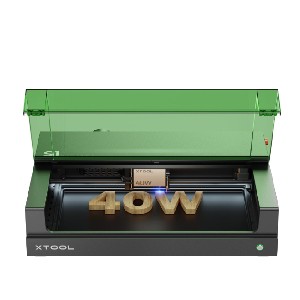
This is a solid step up from entry-level laser cutters, offering a generous 498 x 319 mm work area and a powerful 20W diode laser. It's compatible with various xTool modules and accessories too.
Read more below
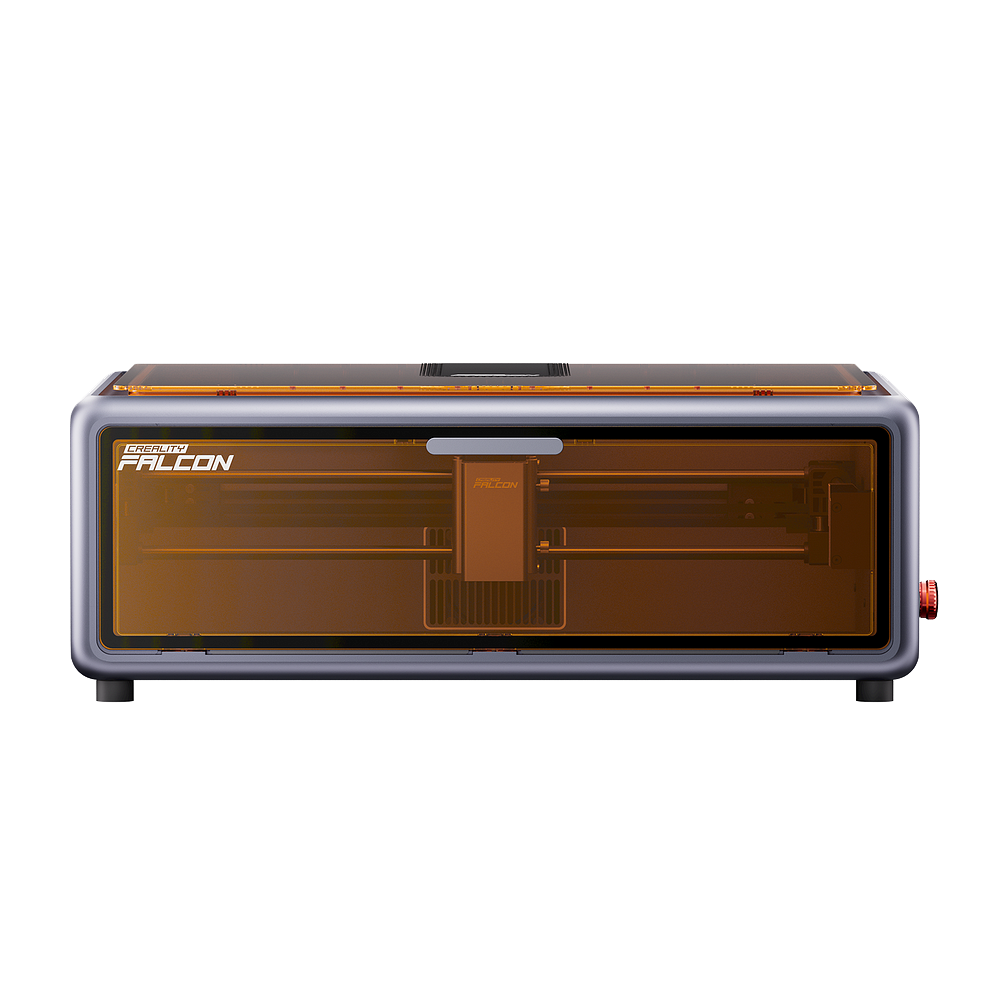
A strong choice for beginners, the Falcon A1 is new on the market and excellent value, coming in at $599 / £529 (most options on this list are $1K+). It's enclosed for safety, and a little on the larger side, but it offers superb results right out of the box.
Read more below
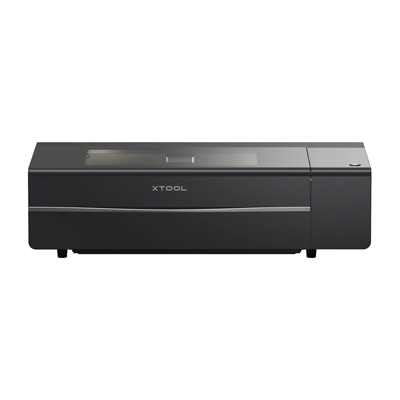
My top pick as the most premium laser cutter, the xTool P2 offers a powerful laser and a fully encased metal frame. I found it to be accurate and reliable, and it can be upgraded to include an auto feeder passthrough and base riser.
Read more below
The best laser cutter overall
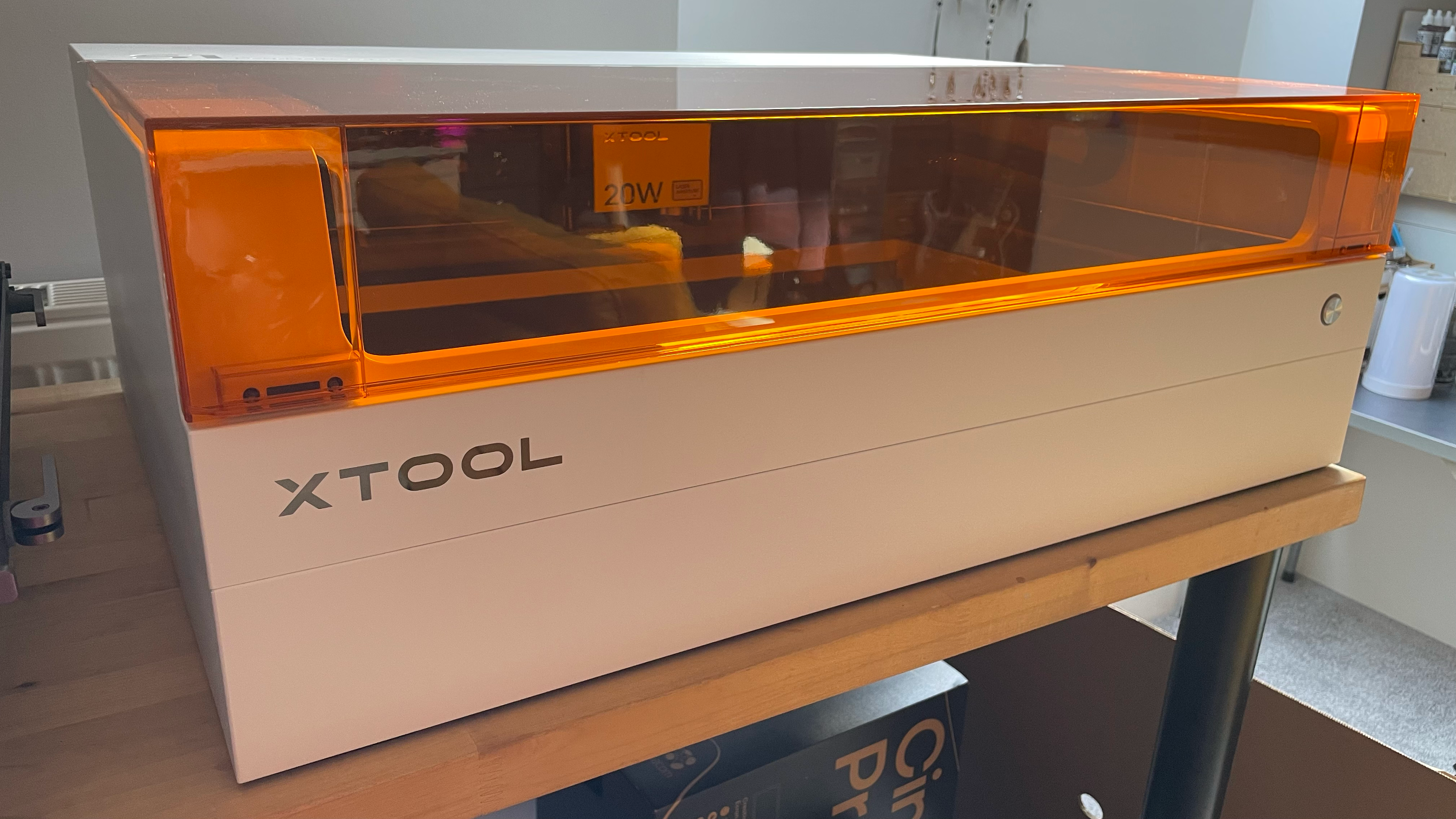

Specifications
Reasons to buy
Reasons to avoid
30-second summary: The xTool S1 is a solid step up from entry-level laser cutters, offering a generous 498 x 319 mm work area and a powerful 20W diode laser that's upgradable to 40W. It's designed with both home users and small businesses in mind, providing a good balance of features, safety, and performance.
Price: Price-wise, the xTool S1 sits in the mid-range, offering good value for its capabilities. The xTool S1 20W Basic Kit retails for $2,293.90 / £1,799 (RRP), while the xTool S1 20W Rotary Kit is $3,351.60 / £2,629 (RRP).
Features: One of the S1's standout features is its versatility. It's compatible with various xTool laser modules and accessories, allowing users to tailor the machine to their specific needs. The dynamic focus feature enables engraving on curved surfaces, while the smart air assist system helps achieve cleaner cuts.
Design: The enclosed design with a fire-resistant shell and multiple safety features makes it suitable for use in home environments. The dual-wavelength filtering lid means you can operate it without protective eyewear, which is a nice touch for convenience and safety.
Pain points: The S1 does have a few drawbacks. The lack of an internal camera means you'll need to manually position your materials and designs using the Pin-point Positioning System. While accurate, this can be time-consuming, especially for batch production. Some users have also reported issues with WiFi connectivity.
Read our full xTool S1 review.

Whilea few of the xTool S1’s functions are not as quick and automated as some other laser cutters on the market, it won me over with its easy-to-use software and its ability to cut and engrave straight out of the box. It delivers impressive results and opens the door for beginners looking to get into laser cutting.
The best budget laser cutter
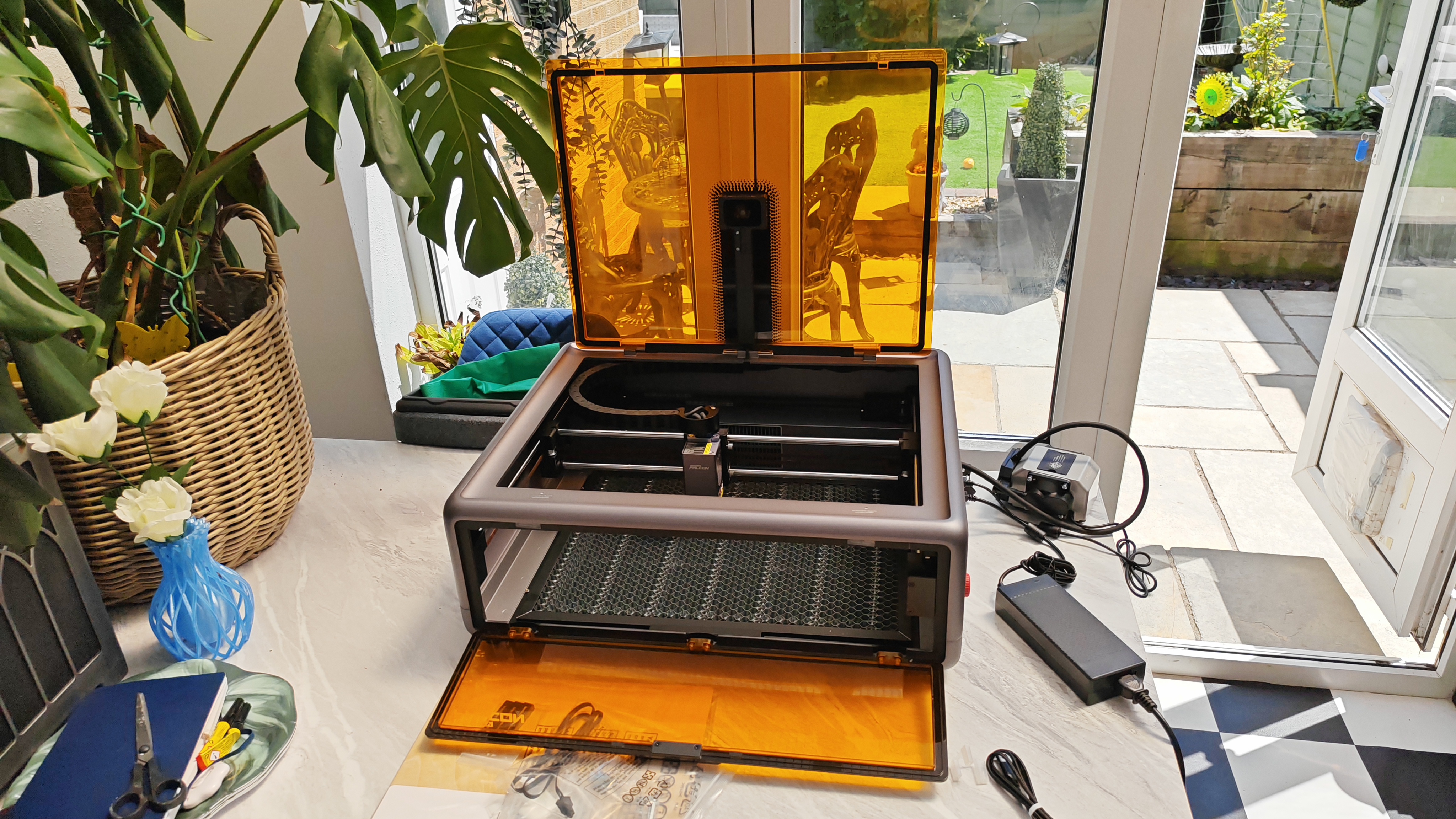
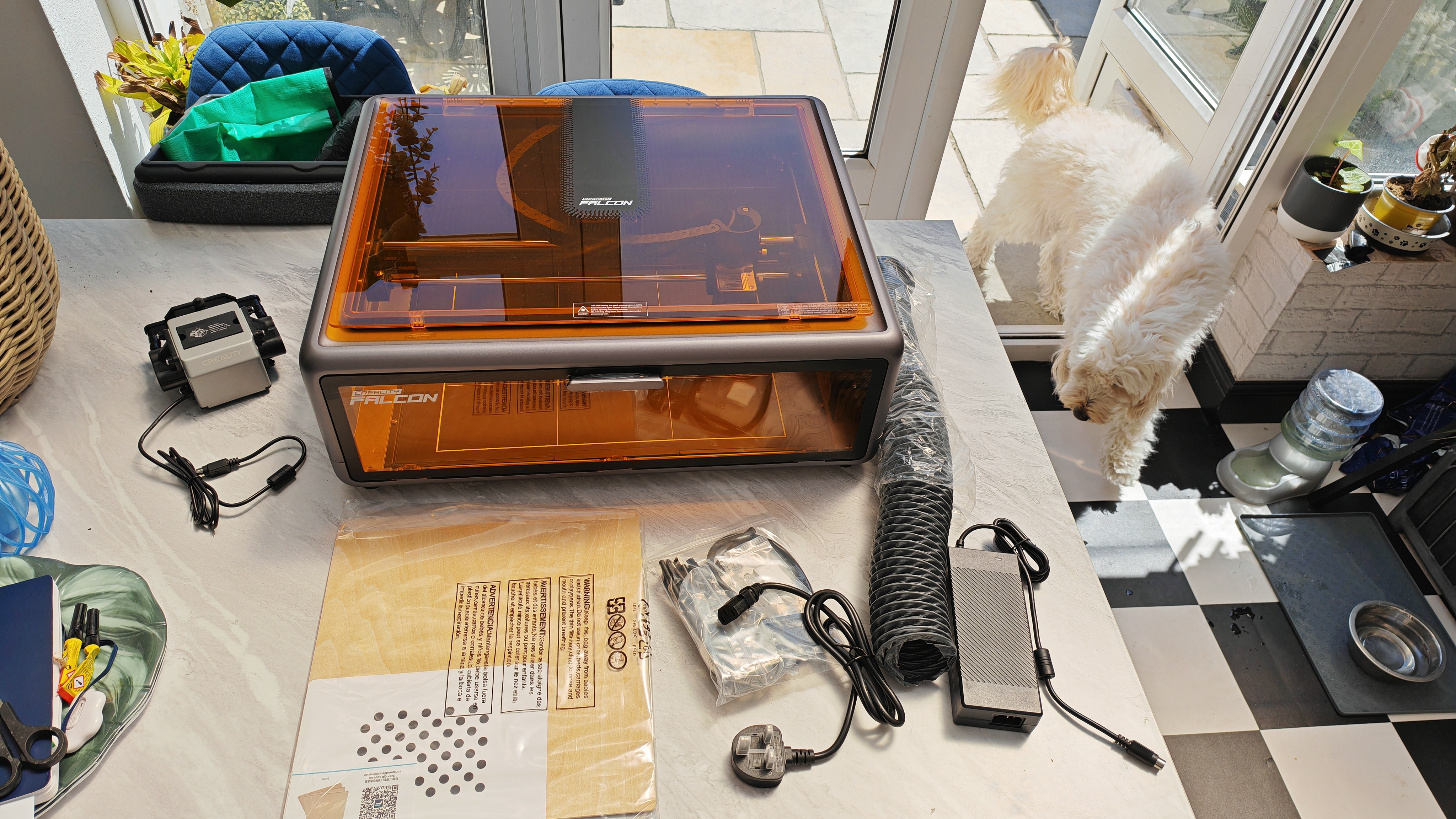
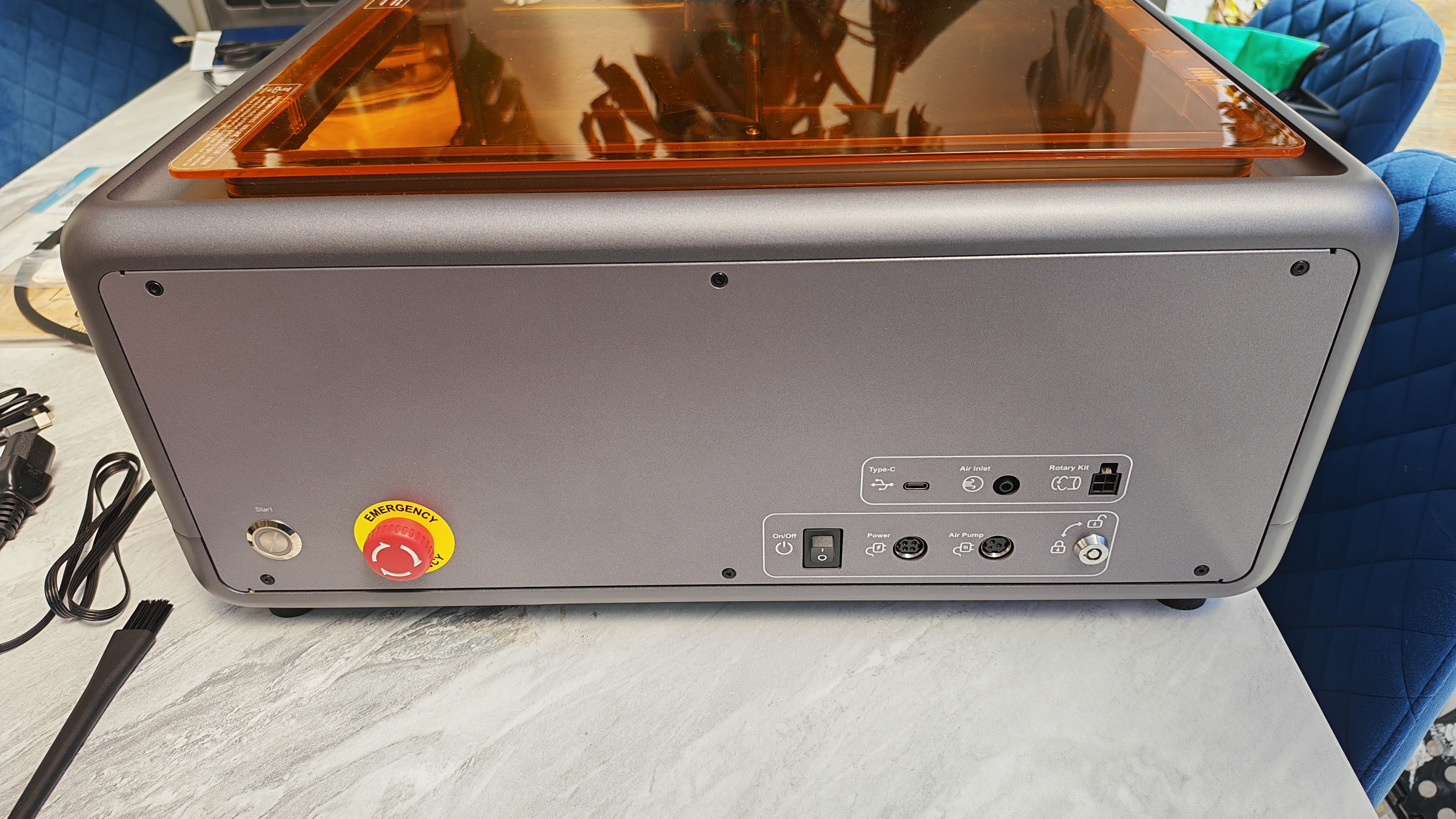
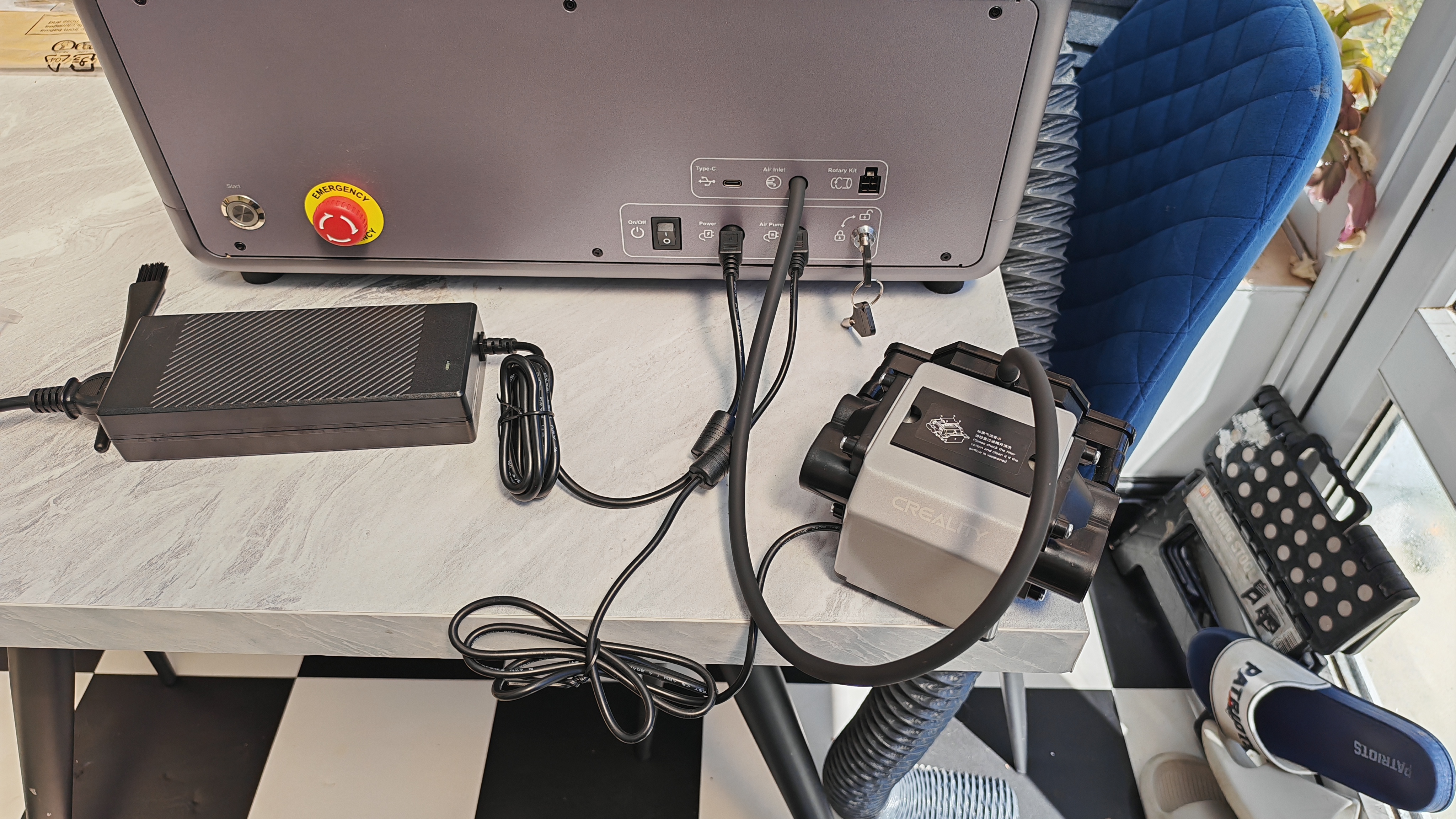

02. Creality Falcon A1
Specifications
Reasons to buy
Reasons to avoid
30-second summary: I'm currently testing the Creality Falcon A1, and it's the first laser engraver that I've ever used. As a complete newbie, I found the setup of this machine to be super simple, and the core XY construction is a lot like several of the best 3D printers that I own (Creality also makes some of the best 3D scanners too). This made it easy to get my head around the initial complexity of a laser engraver, and the Falcon Design Space software (free) needed to set up the engraver is a lot like Cricut Design Space, for anyone familiar with that.
Price: The Creality Falcon A1 (10W) laser engraver has a price of $599 / £529 - which is exceptional value for a laser engraver (usually these can be priced as high as $3K and above. At the time of writing, the Falcon A1 is currently on sale in the UK, listed as only £489 at Creality's website.
Features: This laser engraver is a little on the larger side, and not the most compact or portable - but it has a ton of safety features and an enclosed design that makes it great for beginners and newcomers. There's a built-in camera in the lid to help you align materials perfectly, as well as a key-operated switch to activate the machine and keep it out of unwanted hands. The laser is fast and powerful, and the software is extremely basic (in a good way) and easy to use with tutorials readily available.
Pain Points: While you need to connect your laptop to the Creality Falcon A1 to be able to send laser jobs to it, Creality has also recently brought out a Falcon Design Space app for smartphones. However, I've spent some time trying to connect this to my laser engraver with zero luck. Hopefully, this is just a small hurdle with a new app that Creality will fix in time.
Stay tuned for my full Creality Falcon A1 review coming soon.

I'm new to the world of laser engraving, but after getting my head around 3D printers and Cricut machines, it was about time I dipped my toe into the waters. The Creality Falcon A1 has been a dream to use, and I'm so impressed by how easy it was to get up and running out of the box.
The best premium laser cutter
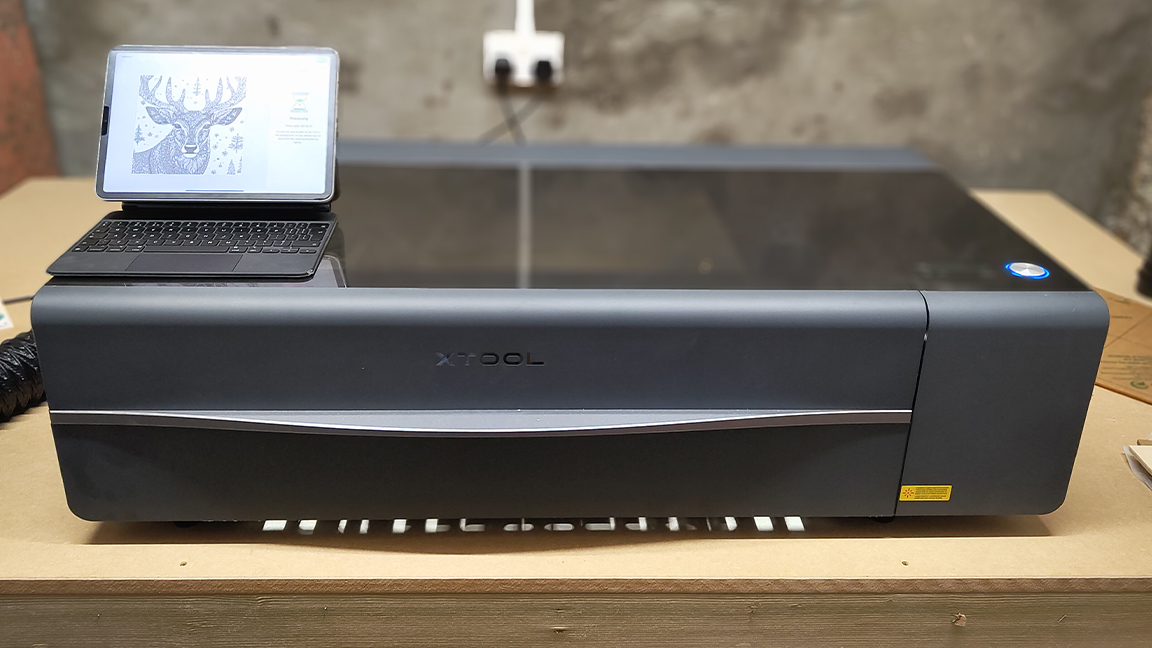

Specifications
Reasons to buy
Reasons to avoid
30-second summary: My top pick as the best laser cutter overall is the xTool P2. It has a 55-watt CO2 laser, which makes it the most powerful laser cutter for home use available today, offering precision and speed. It also features an automated passthrough slot, two 16MP cameras for high-definition accuracy, the ability to engrave curved materials, as well as rotary engraving.
Price: The xTool P2 costs $4,999 / £4,699 for the basic machine. You can usually get discounts from the xTool site of around $700 / £500. My advice would be to opt for a bundle, ideally, the xTool P2 All-in-1 Bundle for $6,955 / £6,349 that includes the RA2 Pro, Automatic Conveyor Feeder, Riser Base and Smoke Purifier.
Features: I found this laser engraver to be very accurate and reliable. There's always some trial and error when using a laser cutter and engraver, but the accuracy of the cameras ensured I was able to rework the same project, going over lines that may not have been cut cleanly or redoing a project with tweaked settings. It has a metal casing with a glass lid and an inbuilt extractor fan, but its workspace is large (600 x 308mm). It's designed to be clean and easy to use, and it's speedy too: running at 600 mm/s, it cuts 18mm basswood in one pass with ease.
Pain points: On the downside, Glowforge Pro has a passthrough that works out of the box, while P2 requires an add-on, the Automatic Conveyor Feeder, to really make use of its expandable size (3,000 x 500 mm). However, that's also a strength since it fits into xTool's wider ecosystem of add-ons, and you can increase the size of the workspace height using a Riser Base (see my guide to the best xTool accessories).
Overall, this laser cutter can do pretty much anything, including rotary engraving (purchased separately). After several months of use, we've found it to be reliable and adaptable. It's large, heavy and a little more complex than a Glowforge, and I find Glowforge's app easier to use, but the P2 costs less for the amount of power, so overall it just pips ahead.
Read our full xTool P2 review.

If you are a beginner, the P2 is easy to use, and if you're a small studio the breadth of uses is impressive: it can cut wood up to 18 mm thick and engrave wood, coloured acrylic, card stock, leather, metal and more. There was some trial and error in getting the results I wanted, but the automatic focus is excellent, making these trials easy. Just note the size and weight: you will need a dedicated space.
The best compact sized laser cutter
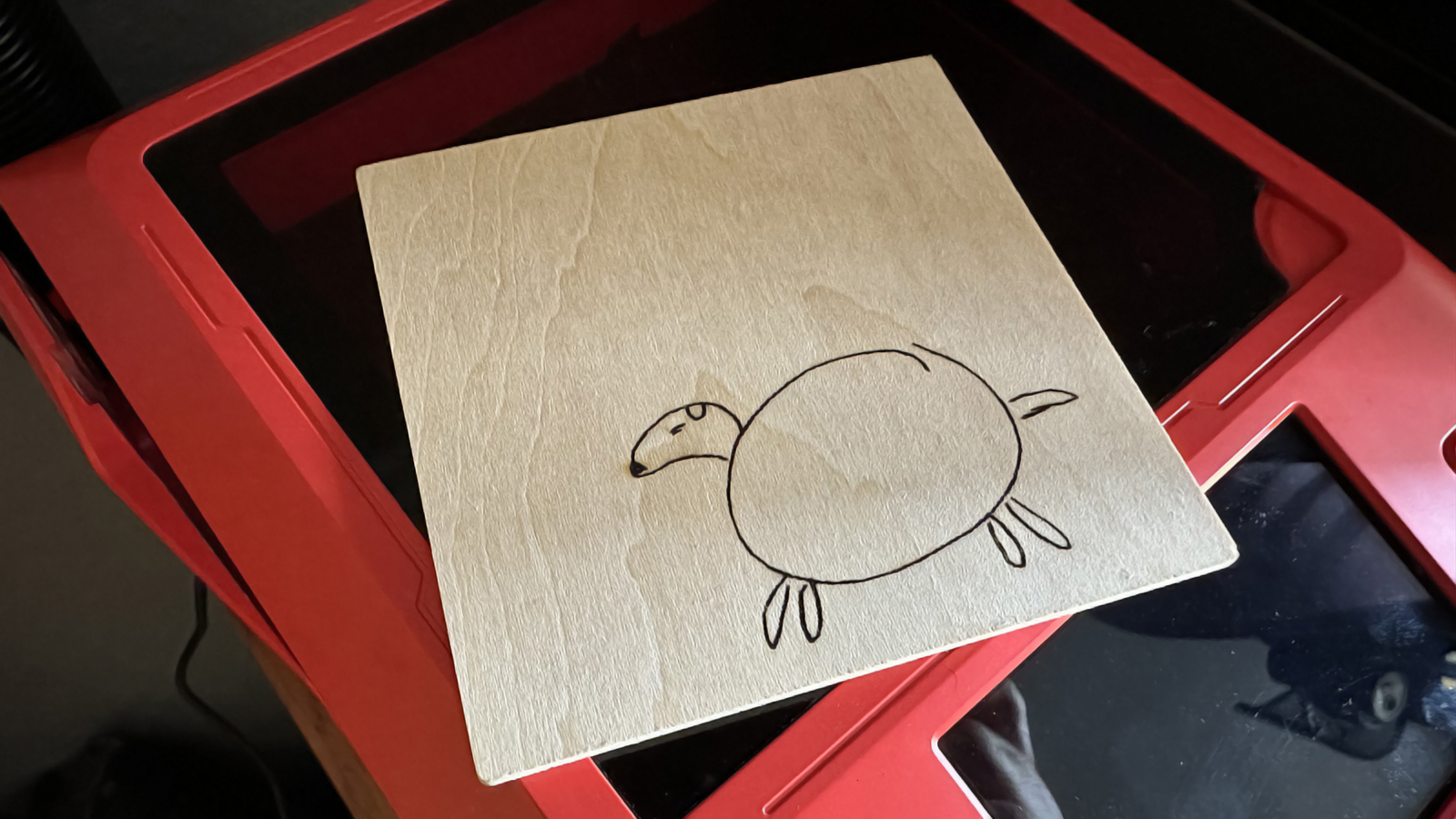
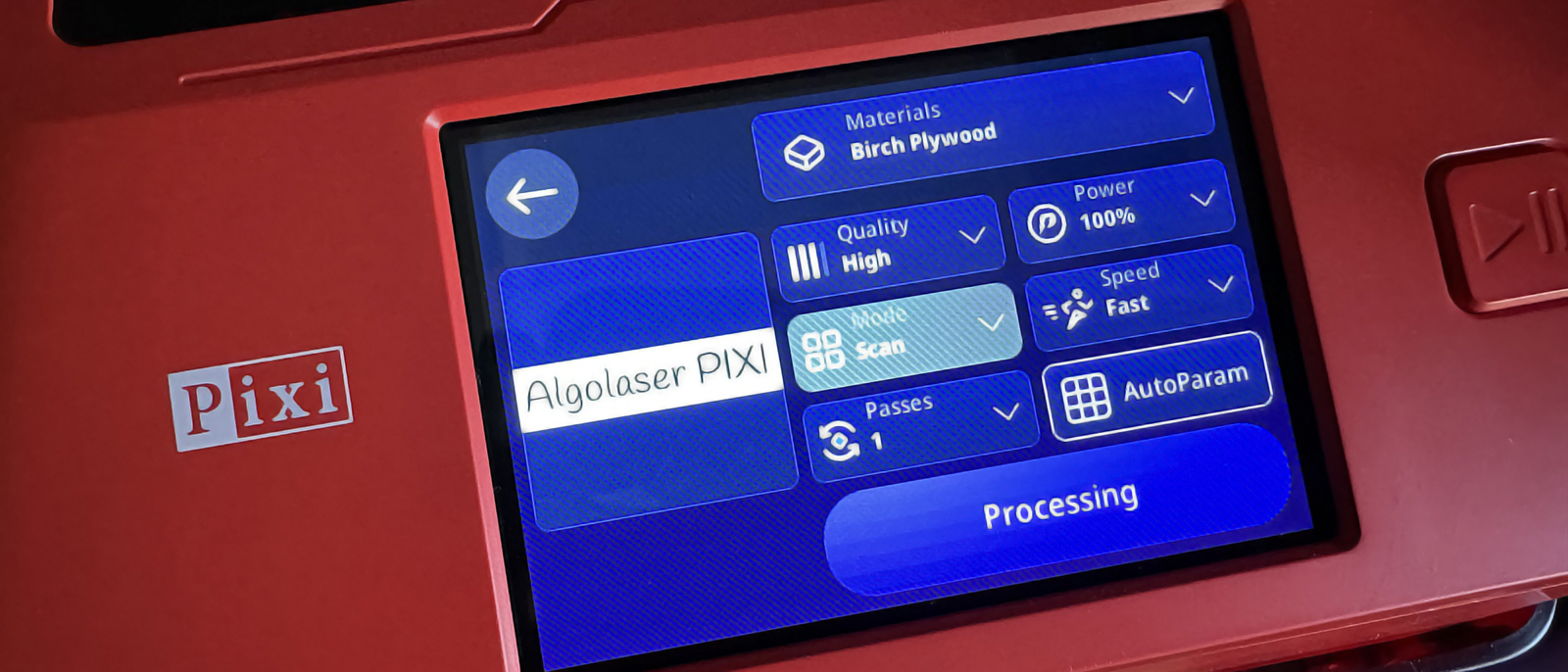
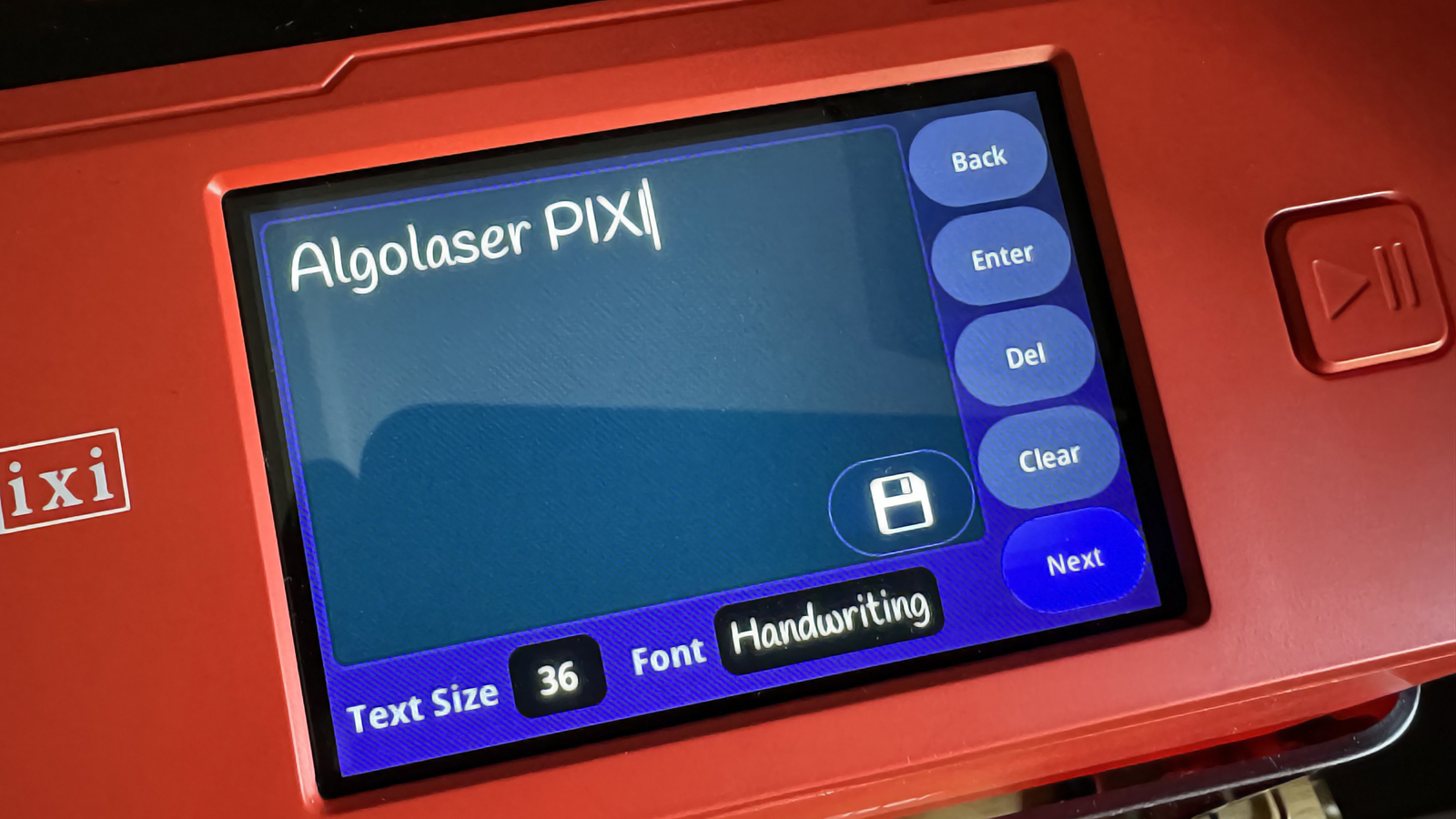
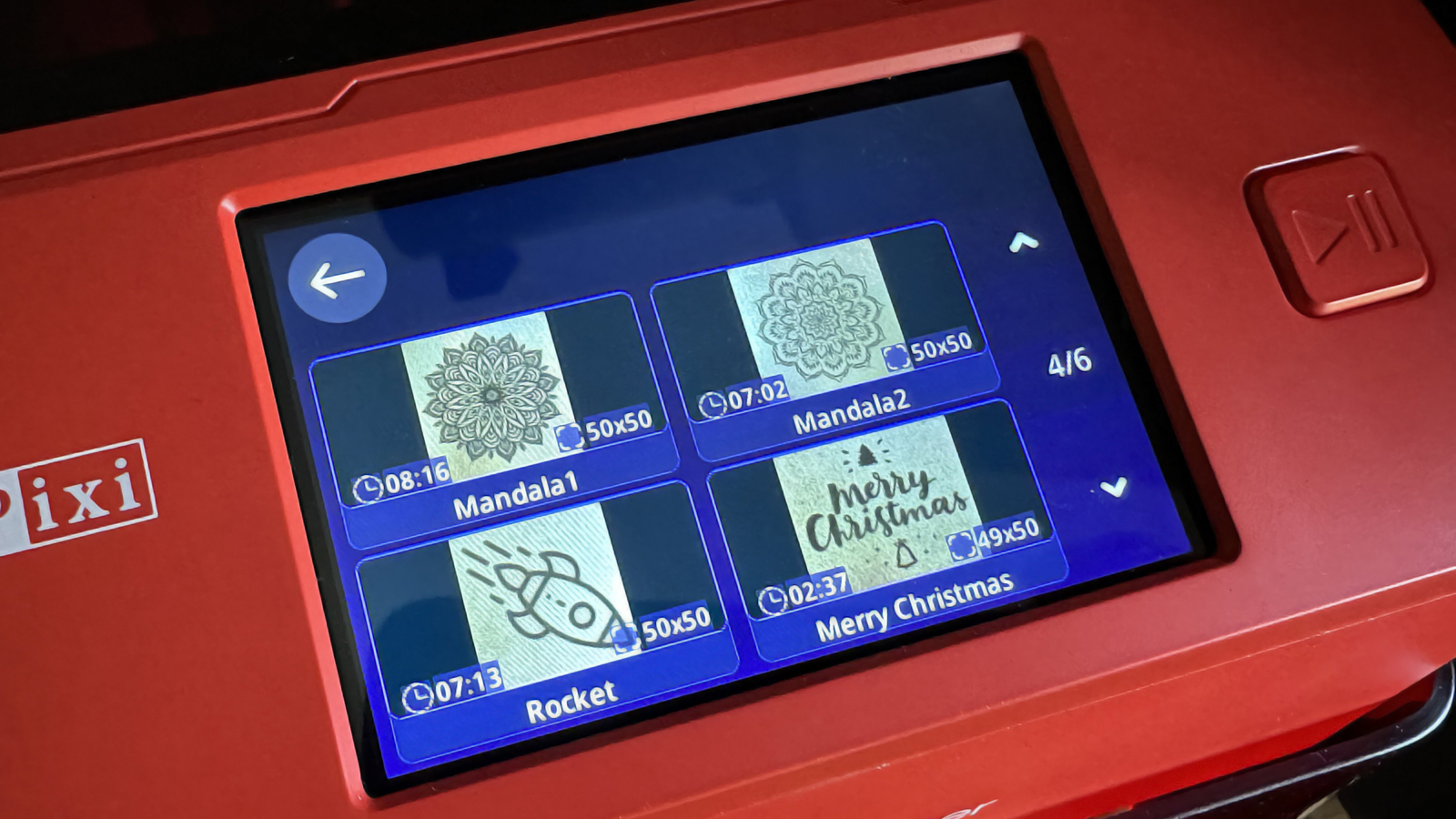
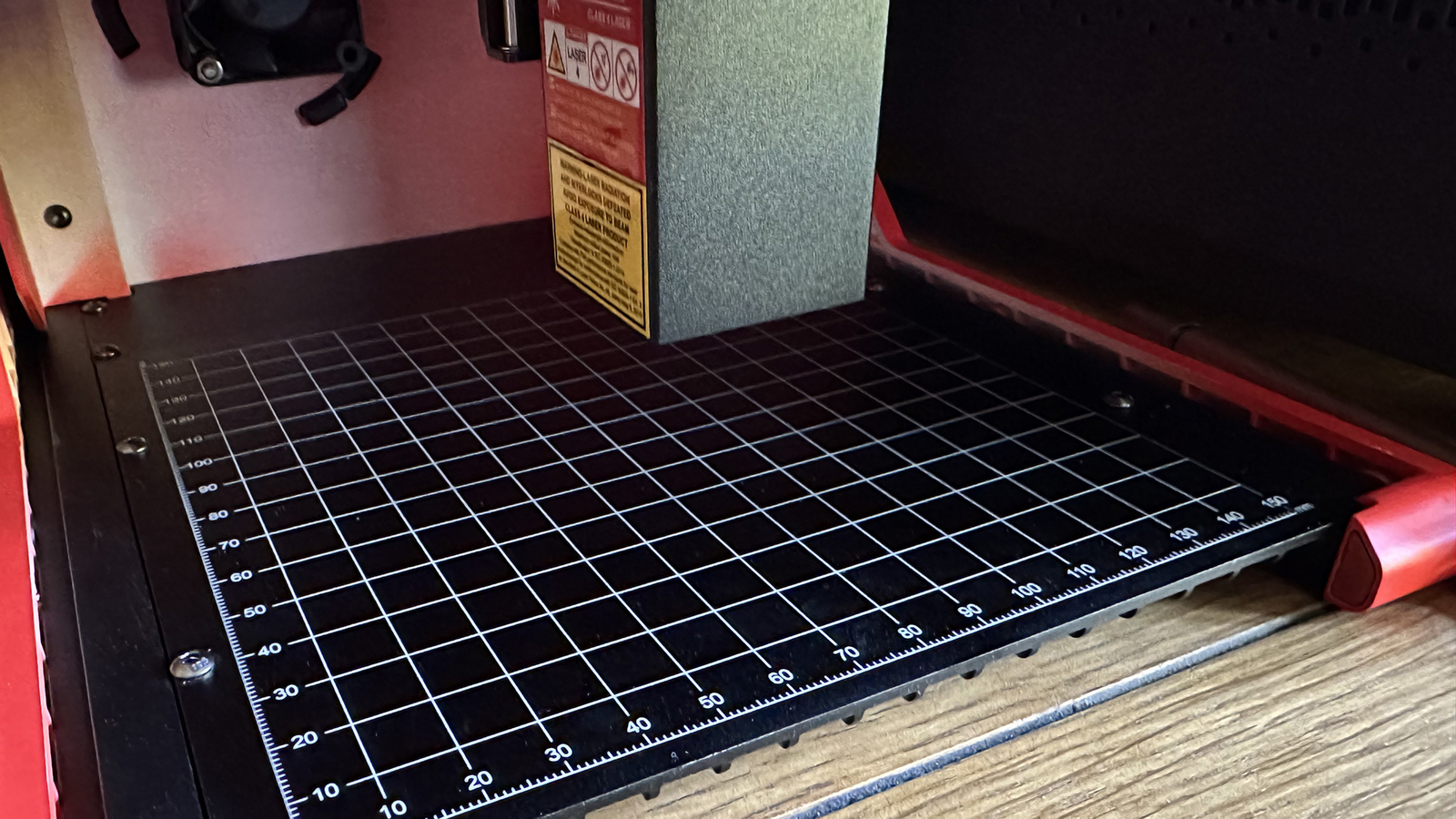
Specifications
Reasons to buy
Reasons to avoid
30-second summary: If you're looking for a great value entry-level (and super small) laser engraver to take to your next craft show, then the AlgoLaser Pixi is a great choice. Don't let its size fool you, this engraver is very capable and produces accurate cuts. It's excellent for small businesses and crafters who intend to make the most of their space.
Price: The AlgoLaser Pixi has a competitive retail price at $611 / £445 for the 10W option, $551 / £401 for the 5W option, or $471 / £343 for the 3W option. Considering that most laser engravers have three-figure price tags, this is excellent value.
Features: There’s a touchscreen on the upper face of the Pixi, which can be used to control the Pixi if you don’t want to use the app. You can use a finger or the stylus to interact, both of which work well. The graphics are clean and bright, but I do think the touch resolution could be slightly better, especially considering you can actually draw designs directly onto it. Mileage will vary depending on the options you choose, as there are 3, 5 and 10-watt options.
Design: The Pixi has a very good build quality, and despite its compact design, features built-in airflow, resulting in minimal scorching, if at all. After several cutting and engraving sessions, our reviewer didn’t observe any burning whatsoever. The nice display screen gives it a feel more premium than the price would lead you to believe.
Pain Points: At this price point, there’s no autofocus, but manually setting it is quick and easy. Text options for engraving are also little limited, but you can choose from a couple of different fonts and adjust the size and position very easily using the touch screen.
Read our full AlgoLaser Pixi review

The AlgoLaser Pixi is small, inexpensive and simple, but it's a very capable little laser cutter/engraver that can take on all manner of jobs. What’s more, it can do it without having to boot up a computer, making it perfect for beginners or those looking to customise products in a shop or craft fair.
The best laser cutter for beginners
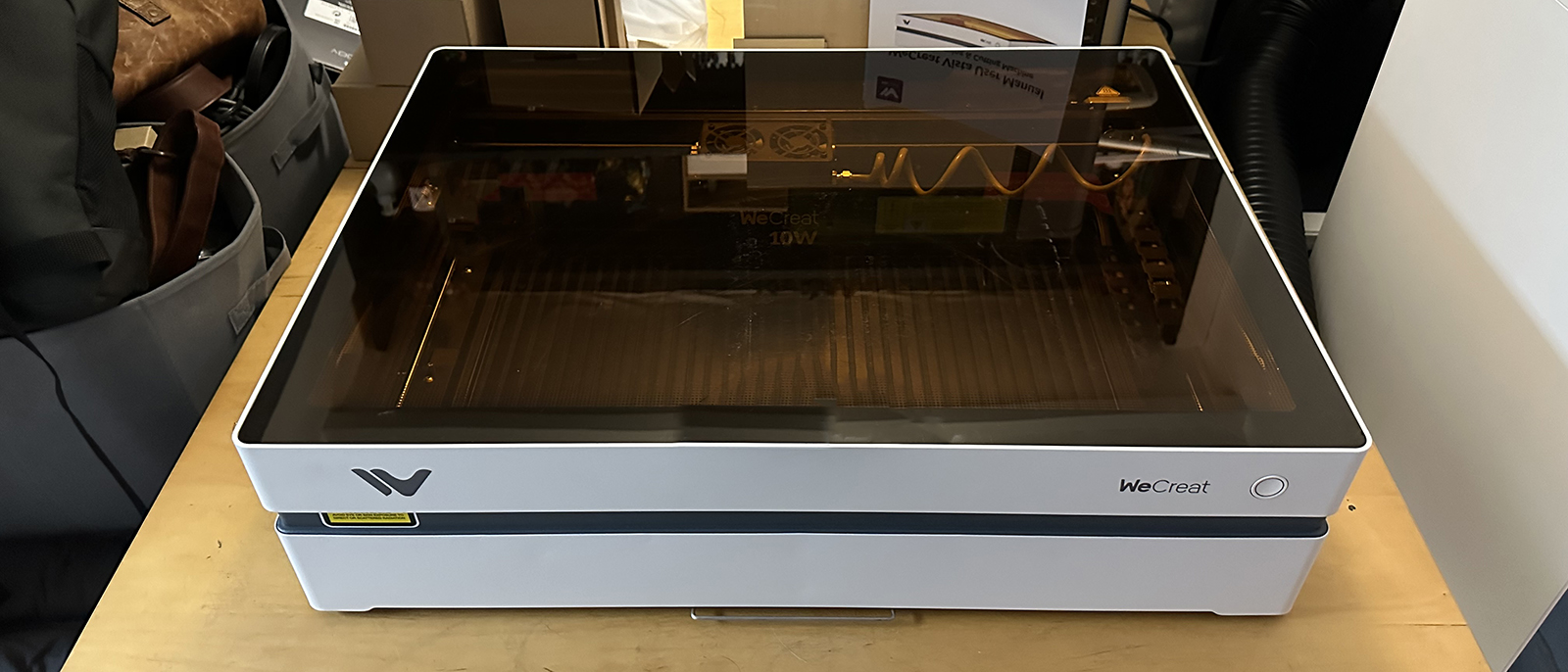
Specifications
Reasons to buy
Reasons to avoid
30-second summary: The Wecreat Vista is a very capable laser cutter with some tricks up its sleeve, including a built-in HD camera, auto stop function, blue-light filter, and batch mode for creating multiple products at once with the extra-large working area. It has a rear exhaust for filtering out any smoke, and a 10-watt diode laser engraver module.
Price: The Wecreat Vista is priced at approximately $799.99, which isn't the most budget-friendly price for a laser cutter of this size, and you'll need to buy extras like the 2-watt IR laser for engraving metal, the smoke purifier, and materials additionally.
Features: During testing, we found that the machine was incredibly easy to setup, and it took our review about five minutes to get it up and running. You next need to download Wecreat's Makeit! Software, which now includes a new AI image generator, will feel familiar to those who have used a laser cutter before.
Read our full WeCreat Vista review.
The best small desktop laser cutter
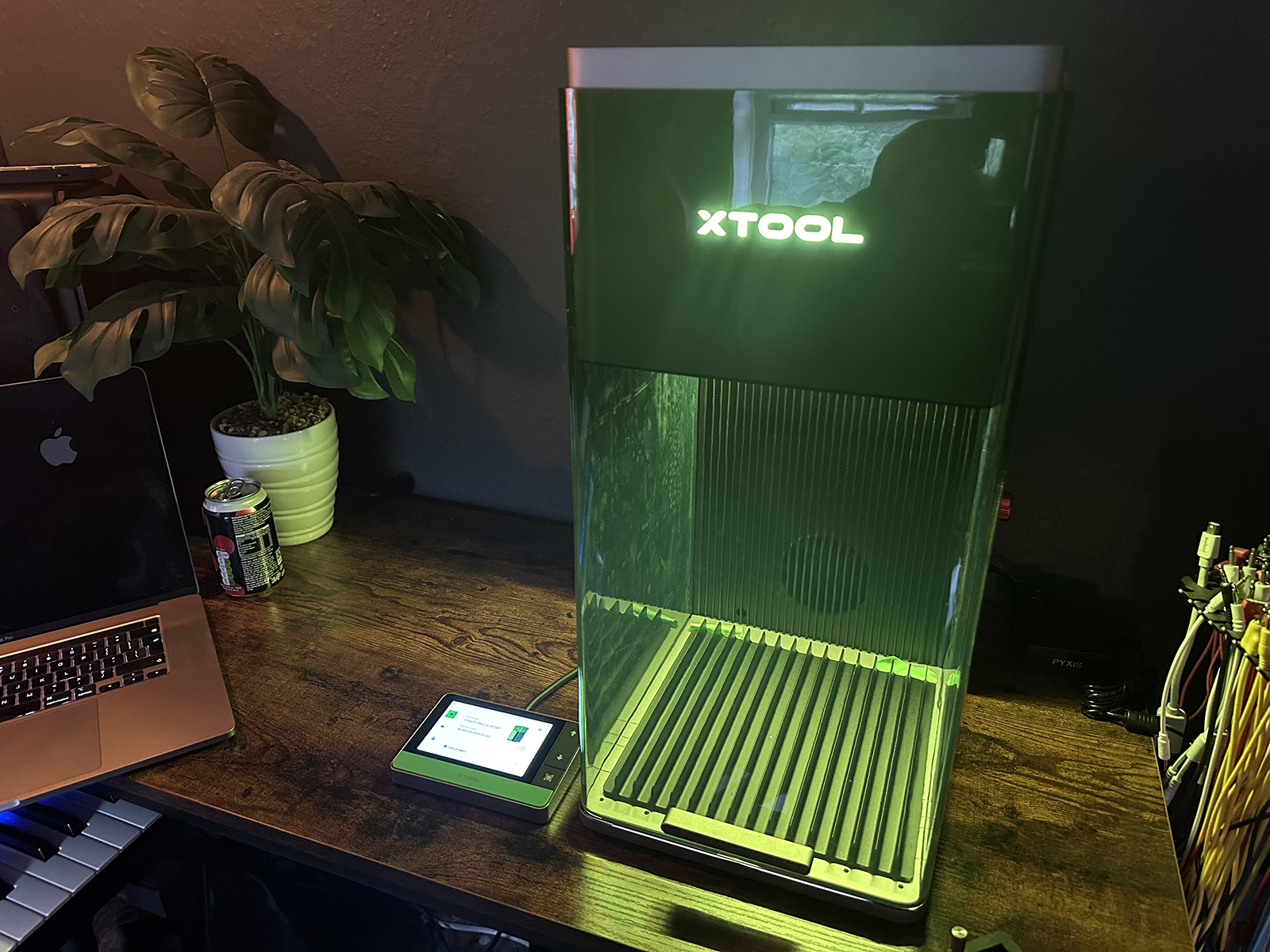
Specifications
Reasons to buy
Reasons to avoid
30-second summary: The xTool F1 Ultra is the newest machine from the company, and replaces the standard XTool F1 model. This is a super smart little laser engraver and cutter that can sit on your desk with space to spare, enabling you to create engraved tags, signs, coasters, or gifts with ease. This is xTool's answer to the portable laser machines pioneered by LaserPecker. The xTool F1 Ultra is a good choice for beginner engravers, but it's also an excellent portable, handheld device for experienced laser engraver users who want the flexibility of a smaller desktop / handheld device.
Price: The xTool F1 Ultra ranges from £4,579 - £6,112, although XTool regularly runs sales with significant discounts.
Design: In comparison to the larger xTool P2, Glowforge Pro, and Gweike laser cutters, the F1 Ultra is small and somewhat limited, but it is a great device for those who want a second laser engraver for small projects (I would say the xTool M1 or Glowforge Aura and Spark are the ideal starter machines).
Features: The big advantage of the F1 Ultra for me is how little space it takes up (I have a Glowforge Pro, xTool P2 and xTool M1 and let me say, space is getting tight). The F1 Ultra can sit on your desk next to your Mac or PC and it doesn't look out of place. If you're looking to get into laser engraving and want to make small gifts for friends, to be sold on Etsy or tags for your craft products, the F1 is a handy addition to have.
Pain points: Its closest rival is the LaserPecker 4, and it's a close call on which is the best in terms of tech. They both include dual lasers, but the F1 has a super-quick engraving speed of 4000 mm/s while the LaserPecker 4 is 2000 mm/s, and it can cut to a 6mm depth as opposed to LaserPecker 4's 5mm. In practice, this is marginal, but the F1 does feature better, more stable design software and a fuller protective casing, which makes it more of an encased but portable laser cutter.
Read our full xTool F1 Ultra review for more details.
The best handheld laser engraver
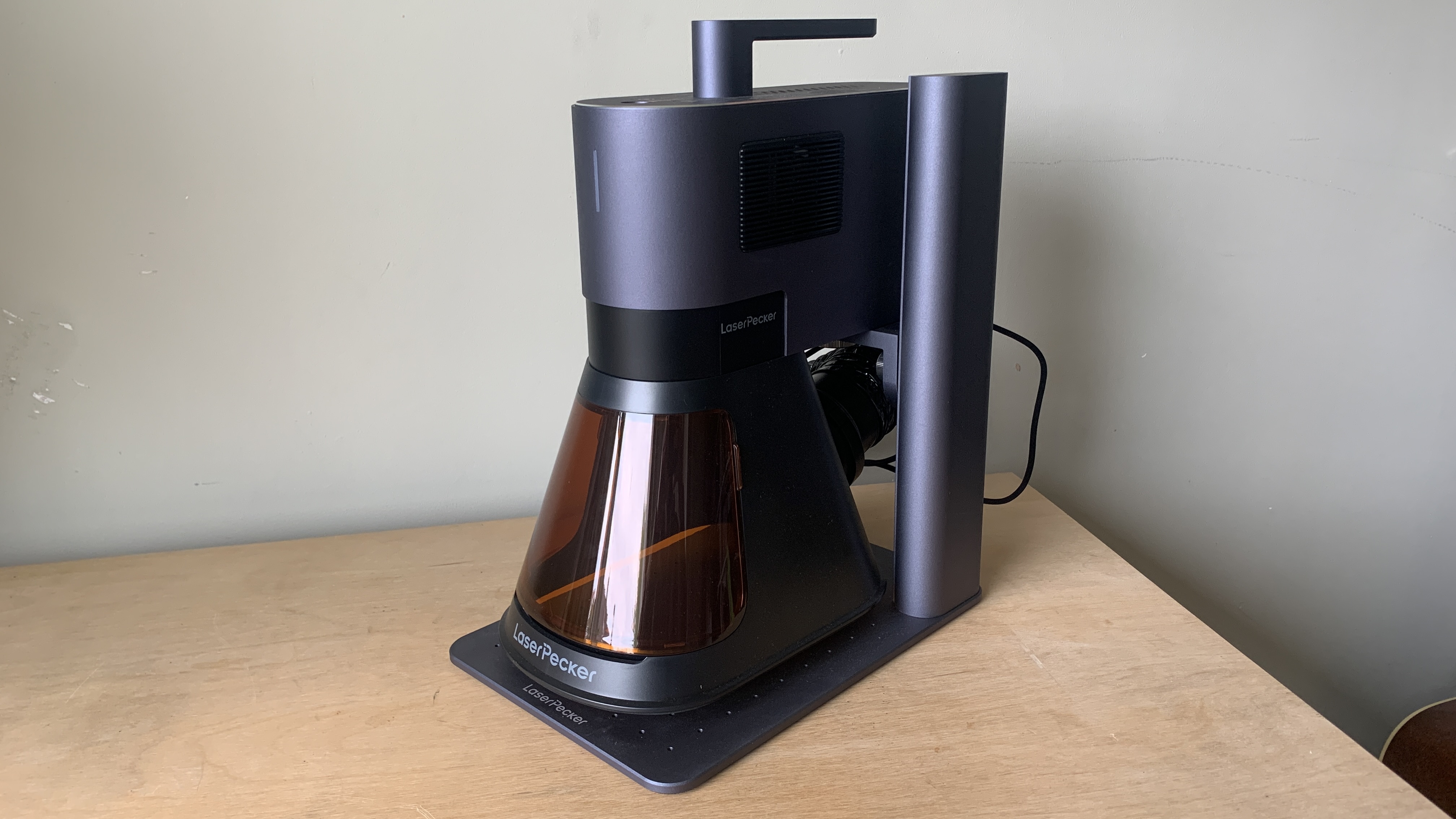
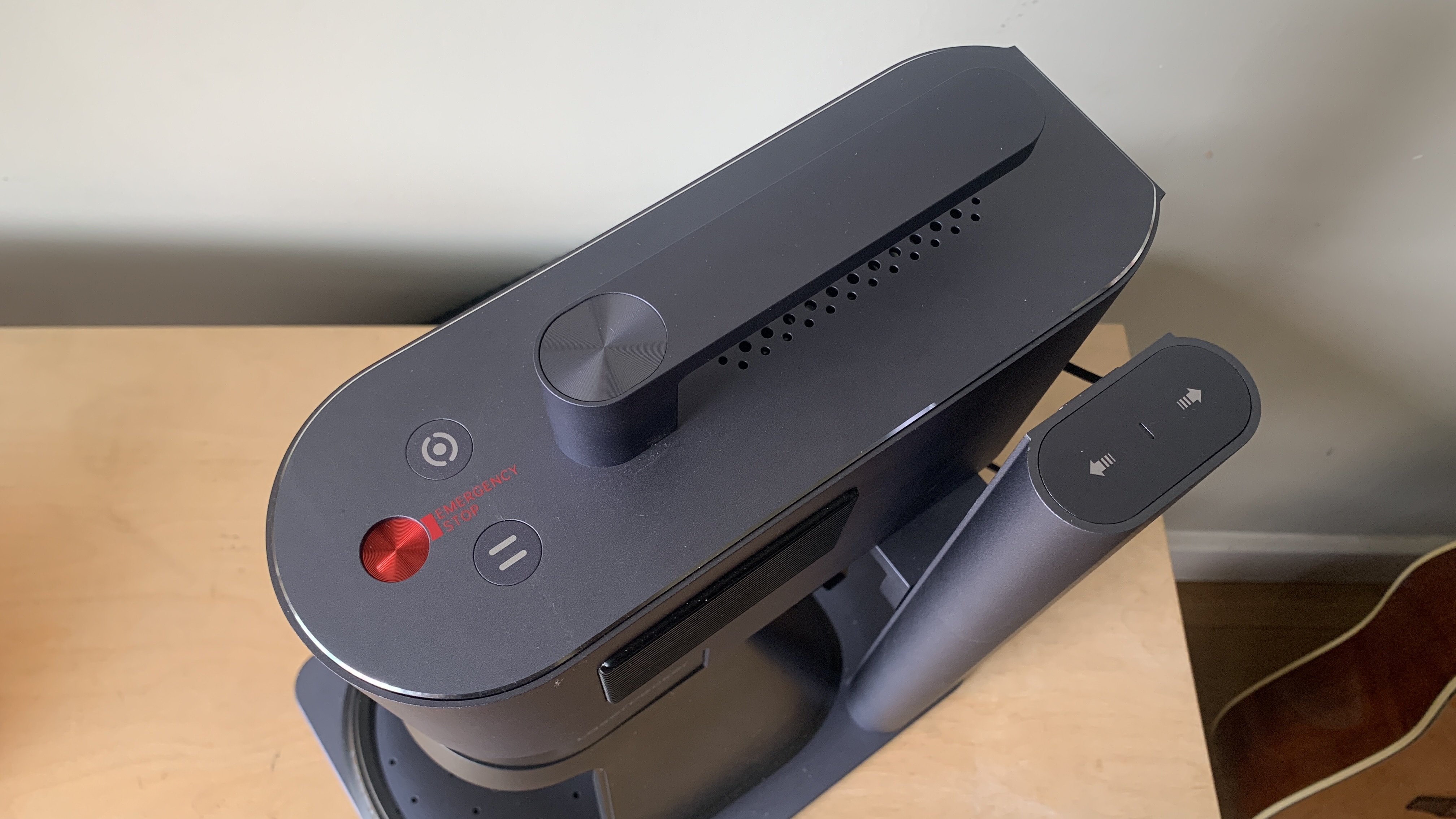
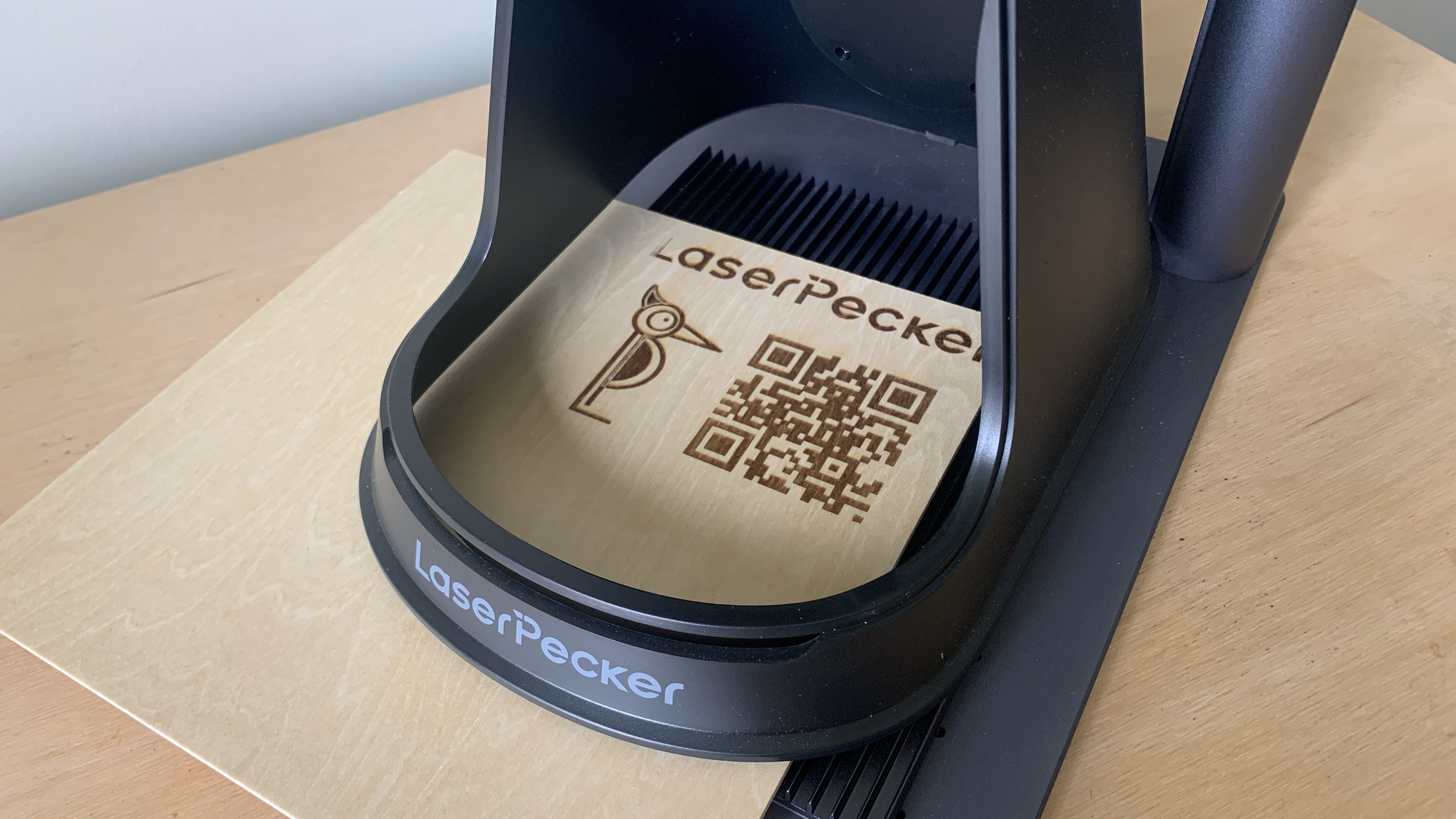
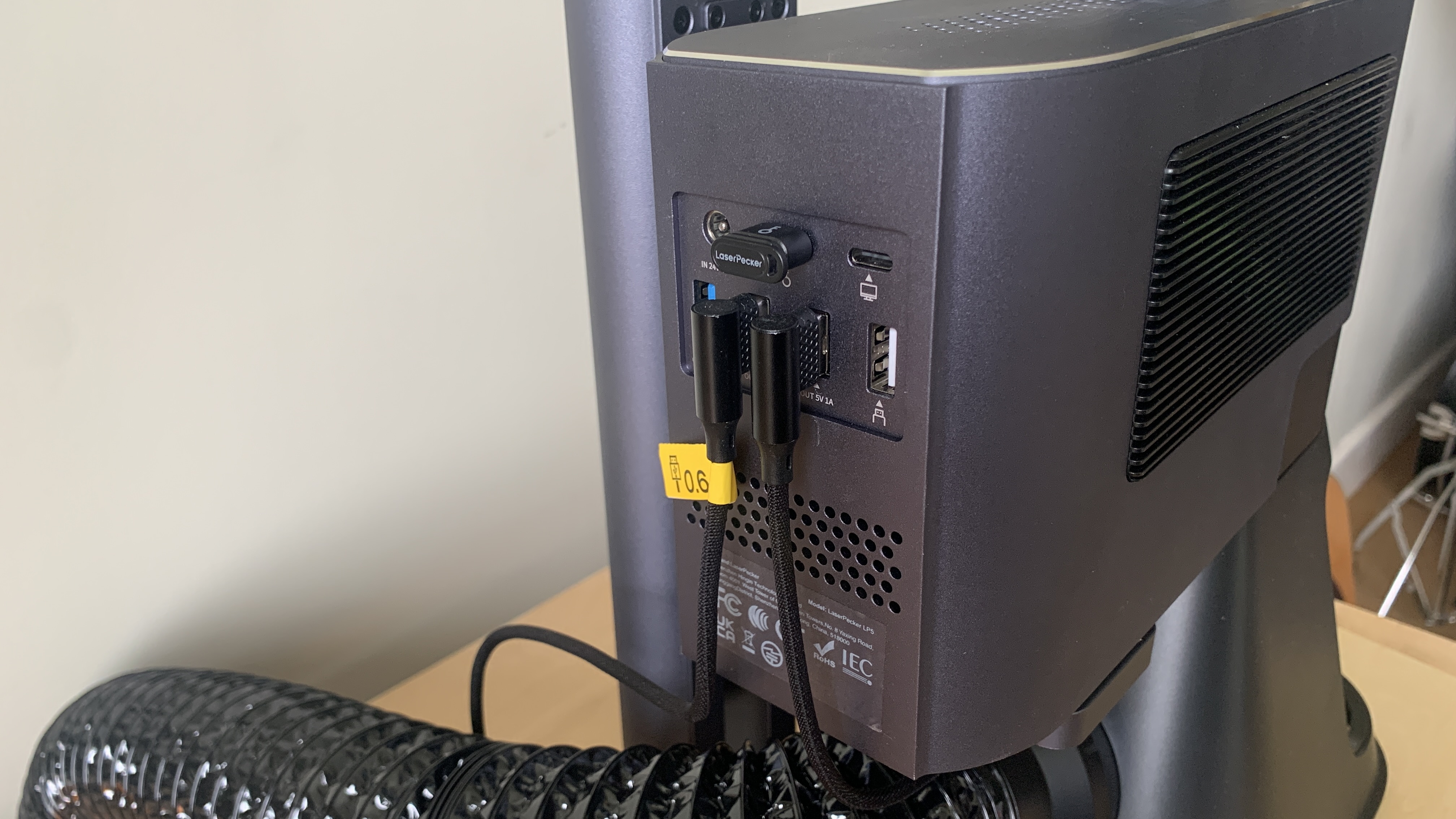
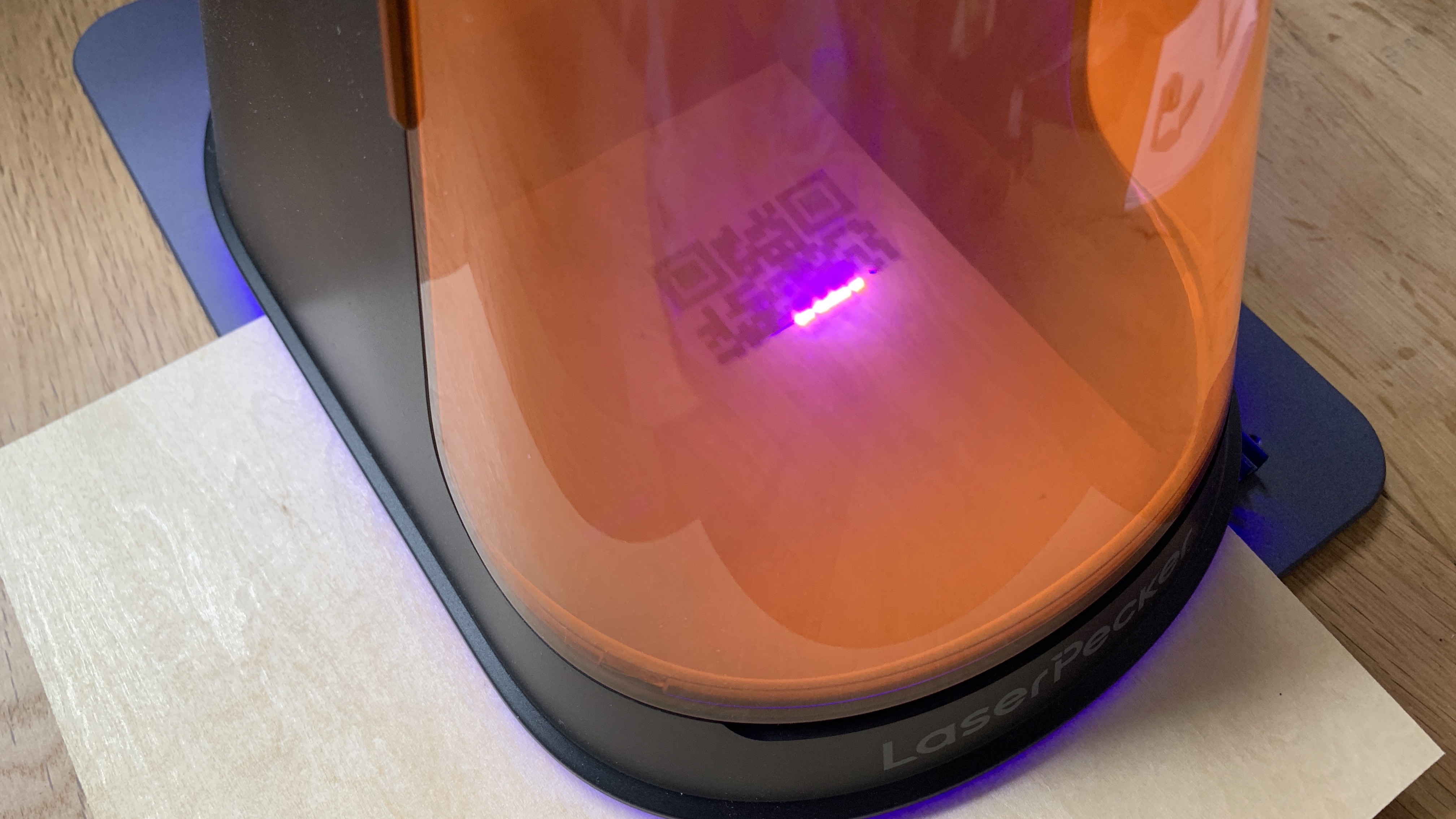
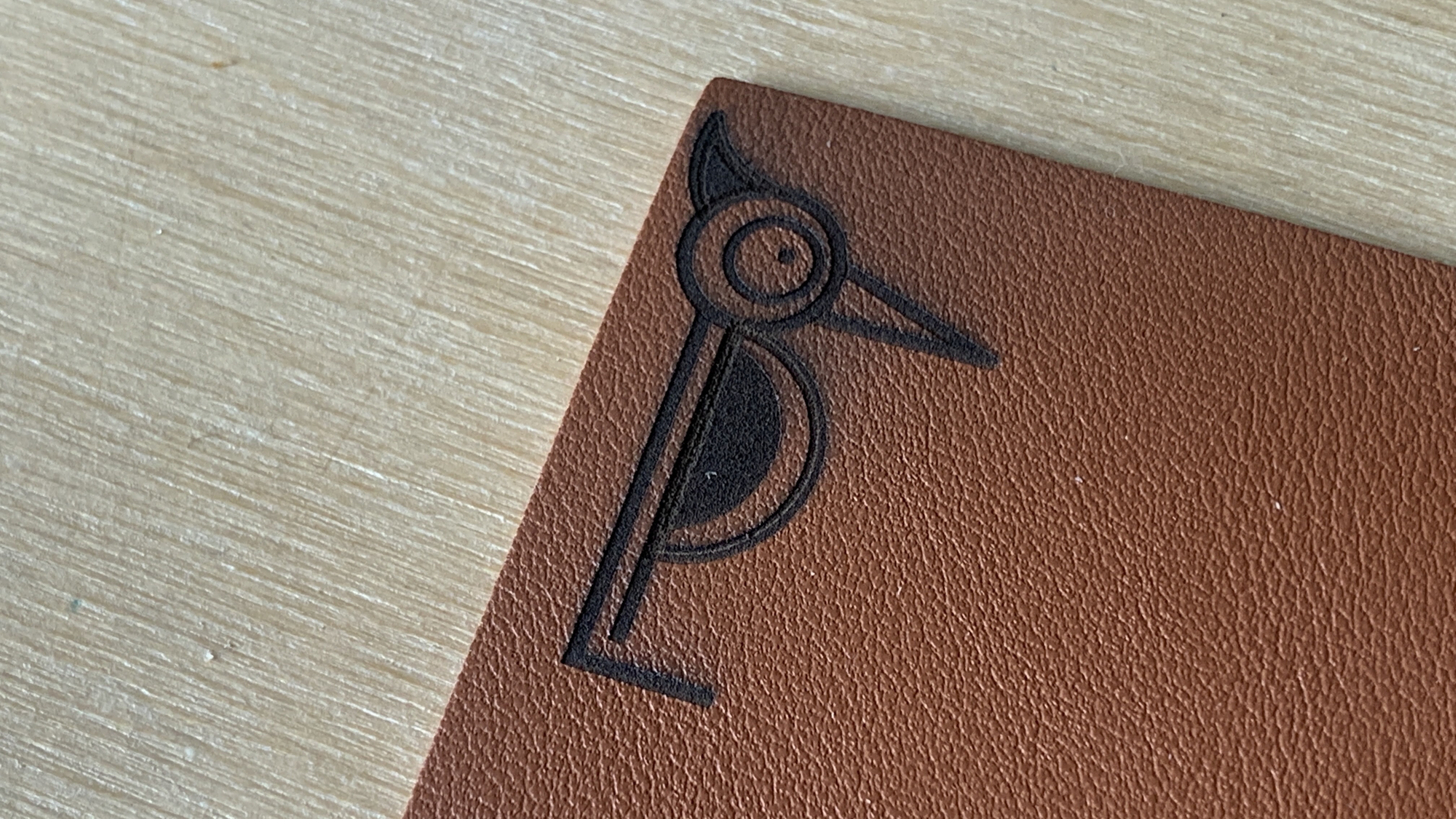
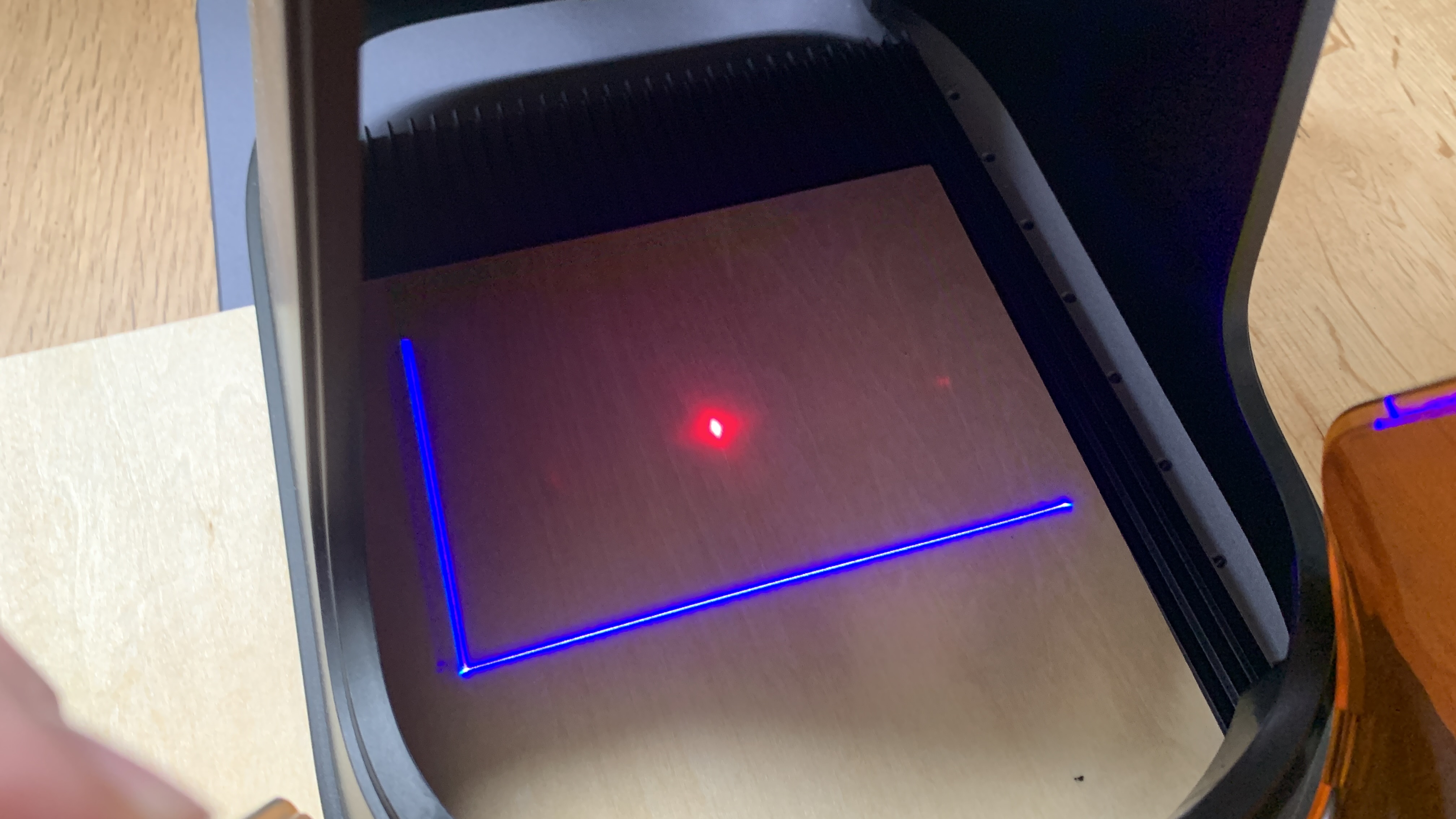
Specifications
Reasons to buy
Reasons to avoid
30-second summary: The LaserPecker 5 comprises a 20-watt 450 nanometre (nm) blue diode laser and a 20-watt 1064 nm IR fibre laser, and combined, can engrave on a plethora of materials including wood, paper, leather, metals and plastics. Overall, it's a fantastic all-rounder, which makes it ideal for engravers working at home as well as those wanting to carry out on-the-spot engravings at craft shows.
Price: The LP5 basic bundle costs $3,299 / £2,889, however, the rotary extension and the slide extension bundle will set you back a total of $3,999/£3,499.
Features: This laser engraver is very convenient for travelling, and its handheld flexible functionality makes it compatible with plenty more materials and existing bases (you could engrave onto a birdhouse, for example, without needing to lie it flat). The selling point really is its handheld design, meaning it can engrave on objects which can’t be placed underneath the unit.
Pain points: A lot of what I would call essential safety accessories required for laser engraving are sold separately with this model, including add-ons like an air purifier, as well as a safety enclosure (which on its own, costs $699/£639). This strips the value for money feature away from the LaserPecker which becomes very expensive as a full package.
Read our full LaserPecker 5 review.

Version 5 of the LaserPecker laser engraver is the best it’s ever been. With more power, faster speed, and greater detail, the LaserPecker 5 is a device that can be counted on. Its portability is one of its biggest strengths, although that does mean its work area is annoyingly small. Whether the LaserPecker 5 is for you or not is likely to come down to whether you value portability or scale.
The best workbench compatible laser cutter
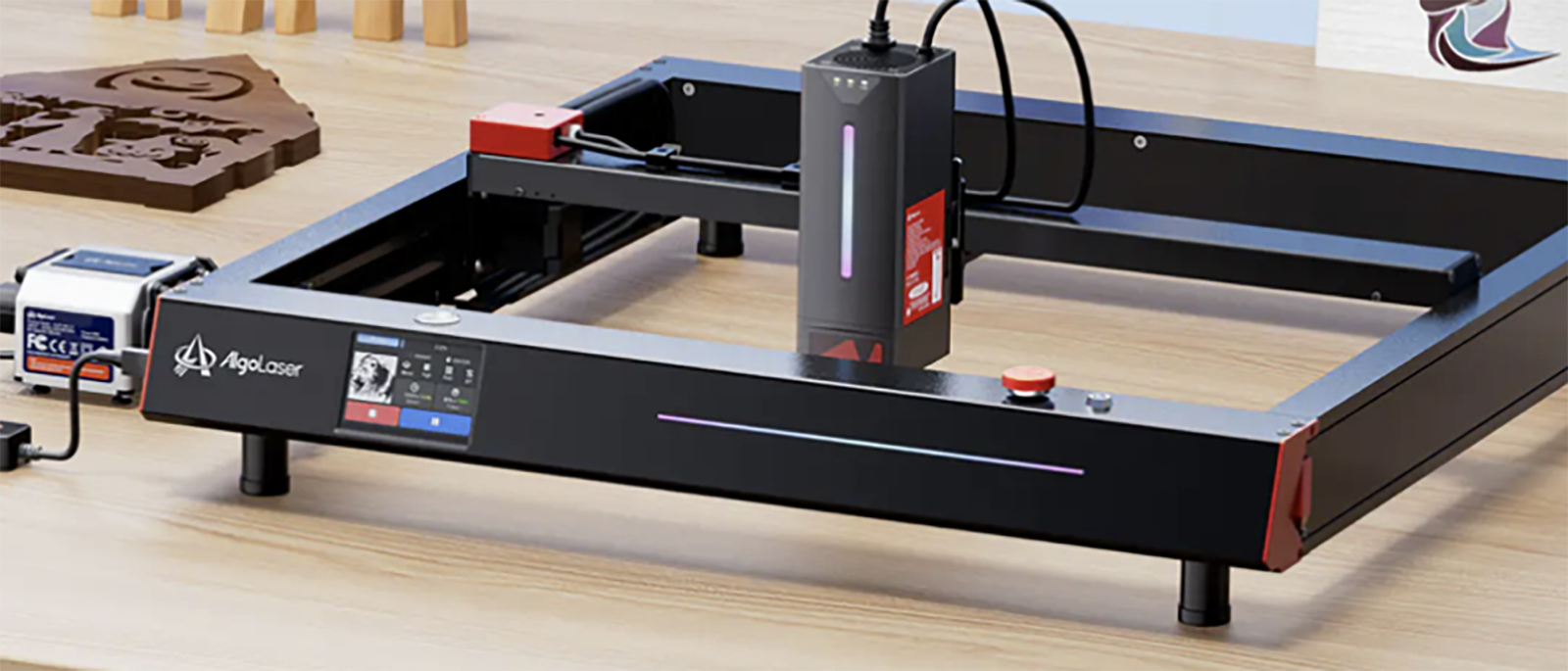
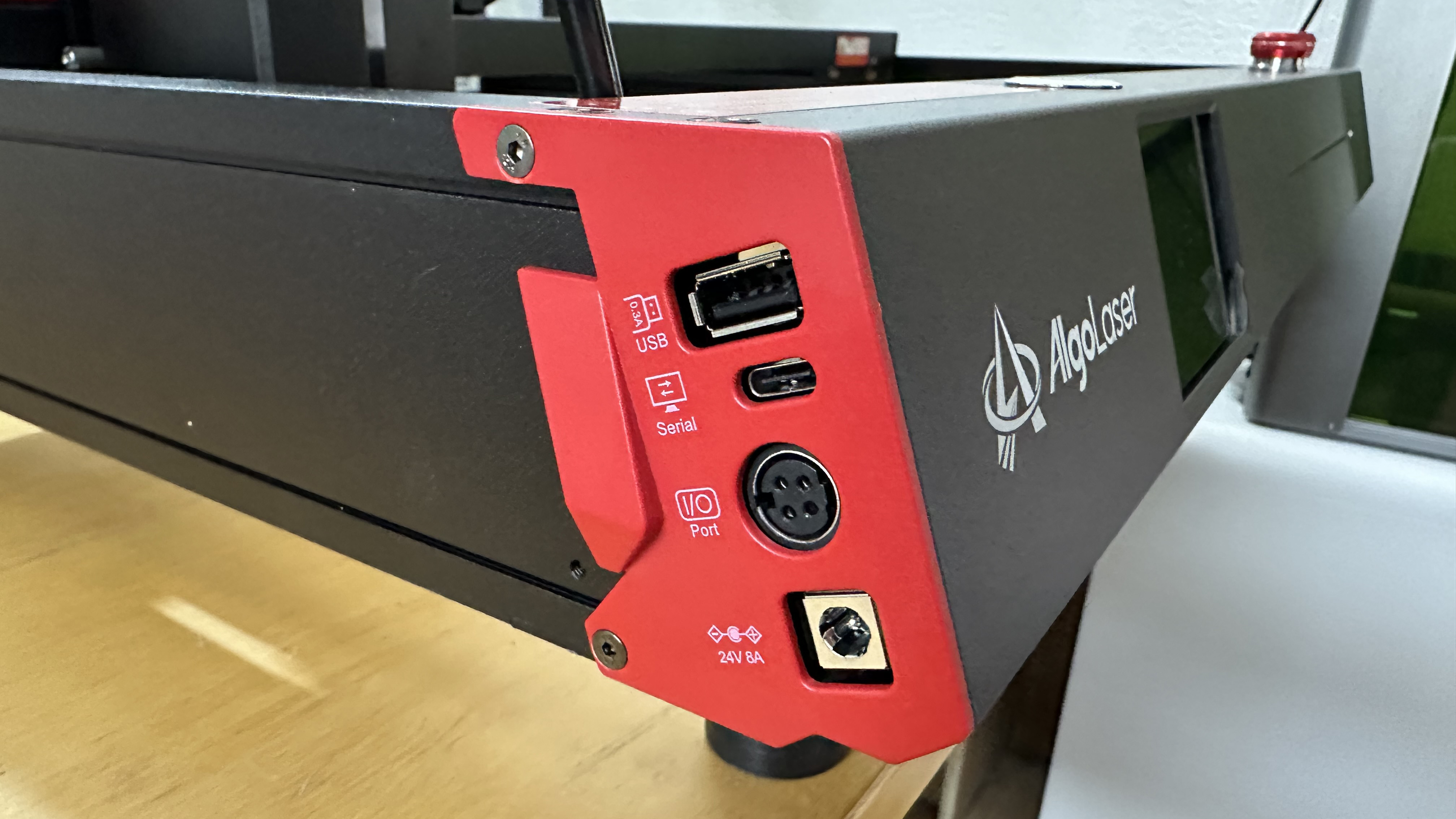

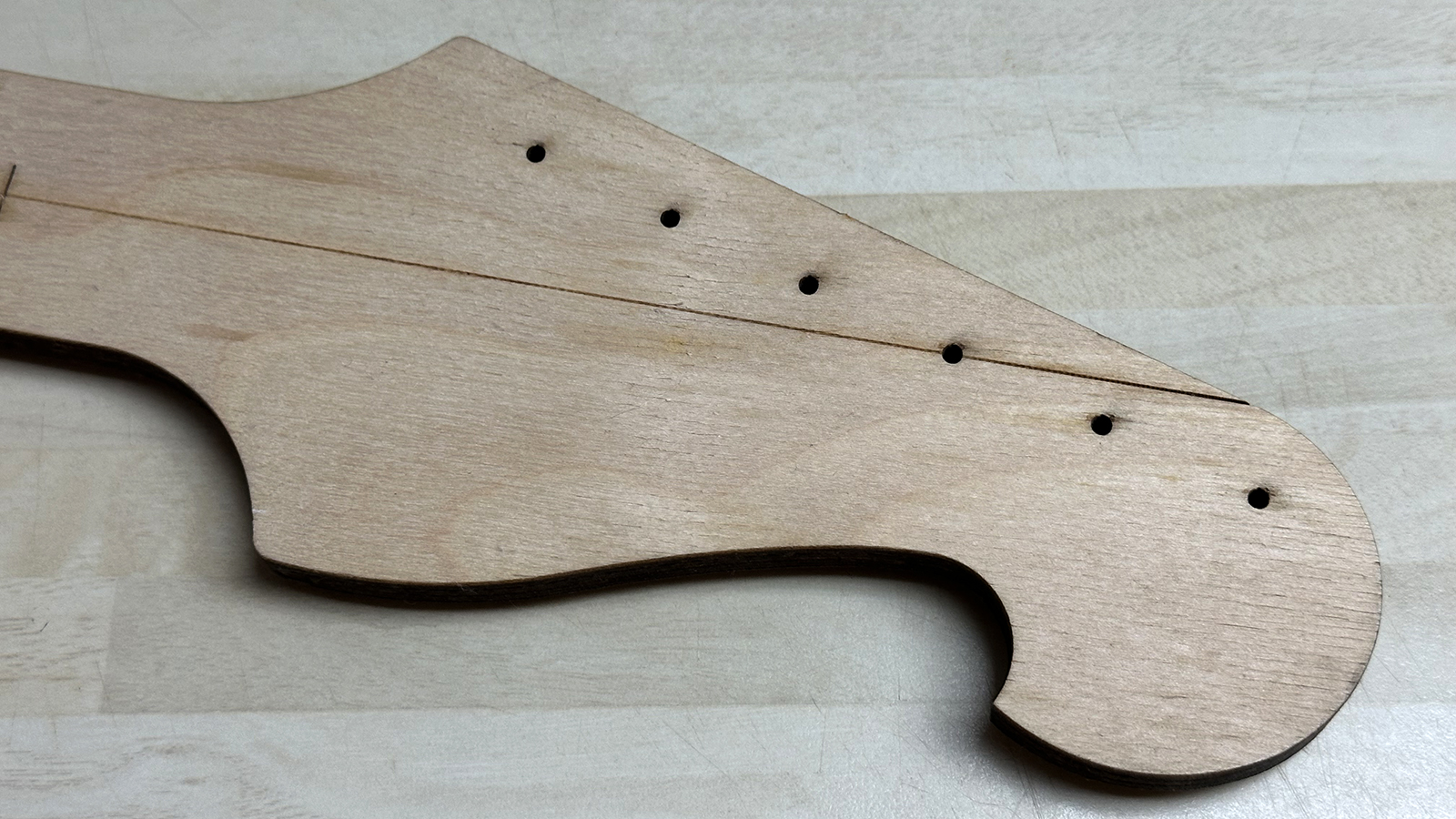

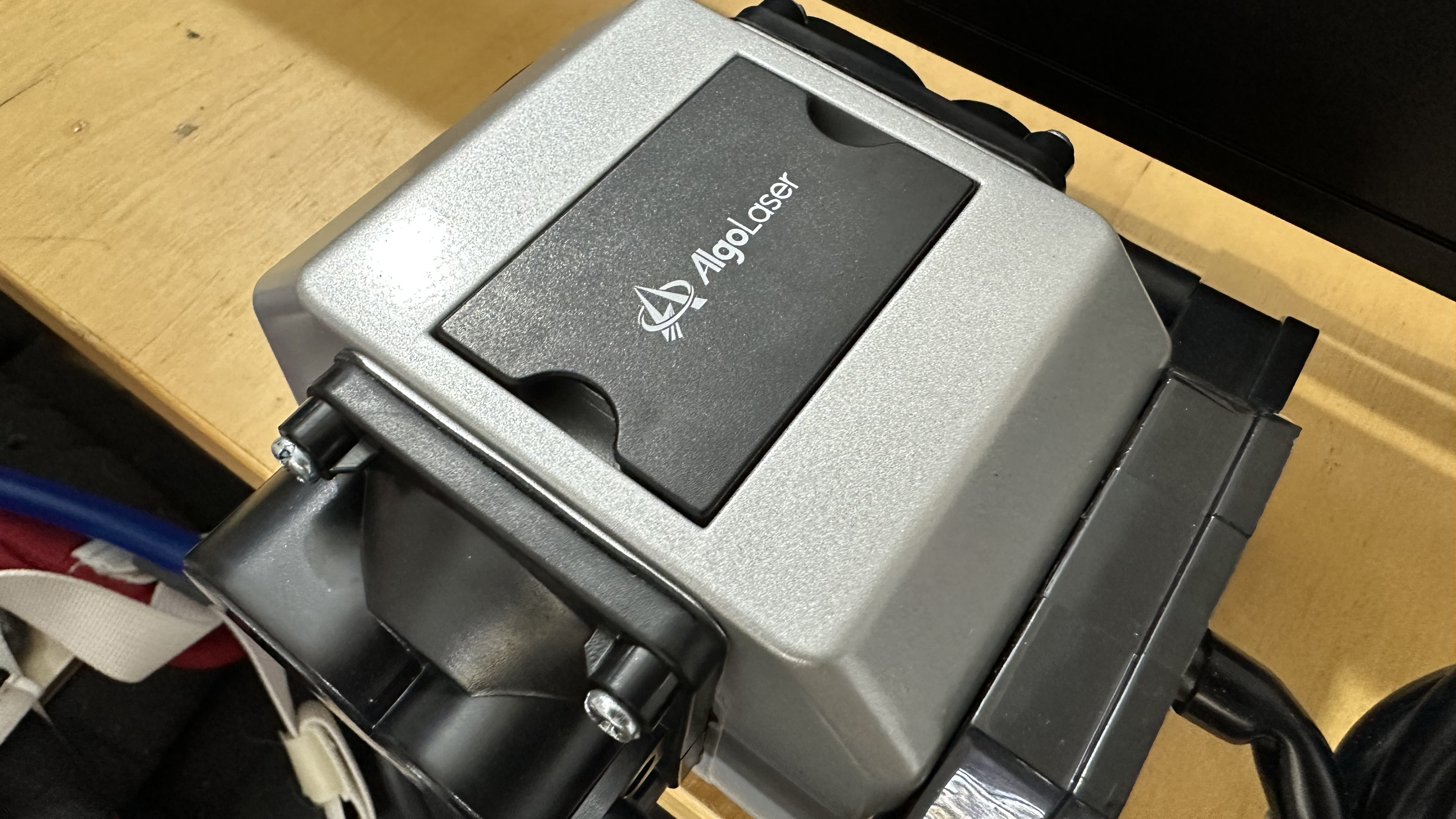

Specifications
Reasons to buy
Reasons to avoid
30-second summary: The AlgoLaser Delta is a great choice for any creatives needing to cut larger or thicker materials, with a generous working area of 400 x 440mm and a very capable 40W laser to get the job done. It has excellent safety features and design elements in place, with protective glasses included, a removable protective guard over the laser module, a key to lock it from use, an emergency stop button, and sensors for flame detection, plus airflow and lens cleanliness.
Price: You can bag yourself an AlgoLaser Delta for $1,299 / £946 for the 22W version, or $2,207 / £1,607 for the more powerful 40W version. This is pricey, sure, but definitely not as premium as some of the other $3K+ priced entries on this guide (*cough, xTool cough*).
Features: This machine is capable of cutting and engraving quite a wide variety of materials, including woods and acrylics up to 50mm thick (impressive for an engraver at this price point). Setup is a breeze, and our reviewer found that engravings were clean and crisp, on all kinds of materials, as are cuts.
Design: The Delta is very nicely designed for a CNC-style laser engraver (which would usually put our reviewer off), combined with a control screen neatly incorporated into the front side, along with an RGB light strip, and conveniently placed ports
Pain Points: This laser engraver has no dedicated software included with the package, only a compatible smartphone app. While operating a big machine like this with your smartphone can be fun, it's recommended to invest in LightBurn (at an additional cost) for better results from your PC.
Read our full AlgoLaser Delta review

The AlgoLaser Delta 40W laser cutter is a great option for those needing to cut a wide variety of materials at a decent size. It's a competent machine, well built and packed with thoughtful design features. It cuts fast and is very accurate, and while it doesn't ship with any desktop software, it's easy to use with the app, or Light Burn, which is simple to get started with.
The best studio-based laser cutter
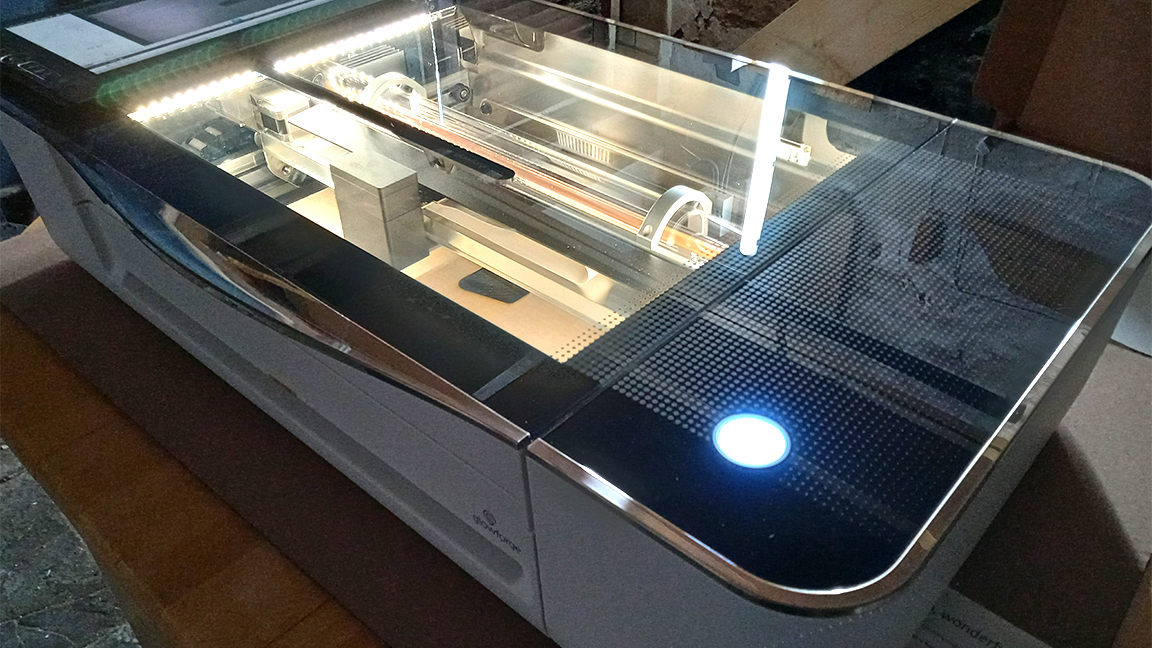

Specifications
Reasons to buy
Reasons to avoid
30-second summary: Glowforge Pro is a beautifully designed 'laser printer' that removes the mess and fuss and packages it with a clean and approachable device. This is the top model from Glowforge, which also has a medium Plus edition and a slightly less powerful Basic model as well as the Cricut-like Aura and Spark models. It looks like a standard printer but can engrave everything from metal to wood and tiles to paper and leather – it's perfectly suited to every task that requires accurate cutting too, from costume creation to model work.
Price: The good news is that Glowforge is cutting the price of its Pro, to focus on its Aura and Spark machines. This means you can now buy a Glowforge Pro for $5,999 / £4,807, which brings it down in price considerably, via the Glowforge website.
Features: The Glowforge Pro uses a high-spec Class 4, 45-watt laser which is one of the most powerful you can get outside an industrial device, or the xTool P2 at No.1. (The Plus and Basic use a 40-watt, Class 1 laser, which is still more powerful than most on this list.) This Pro model comes with a 'passthrough' slot for large lengths of material, making it an ideal wood laser cutter – you can even make furniture.
Design: The Glowforge Pro offers the same cutting and engraving as many of the best laser cutters on this list, but its design keeps any mess inside the machine (a filter sucks away any dust and debris into an external air filter). Designs are sent to the machine via a bespoke app, and the Glowforge machines support Windows, Mac and tablet devices. It's this ease of use and clean approach to laser cutting and engraving that makes the Glowforge Pro a premium studio choice.
Pain Points: When I tested this machine for my Glowforge Pro review, I was impressed with the machine's speed, ease of use and excellent design app. It does, however, ideally need to be used with the Glowforge Air Filter accessory. The xTool P2 is cheaper and more powerful (meaning slightly faster) and a little larger, but the ease of use of the Glowforge Pro means it's a great machine for everyone, including small studios or schools.
Read our full Glowforge Pro review.

This is in a class of its own, quite literally. The Class 4, 45 watt CO2 laser is better than anything else you can find for home use, making the Glowforge Pro a powerful, fast and accurate laser cutter ideal for professional projects and high-end crafting, including for creating large and detailed projects for work and clients.
The best open-frame laser engraver
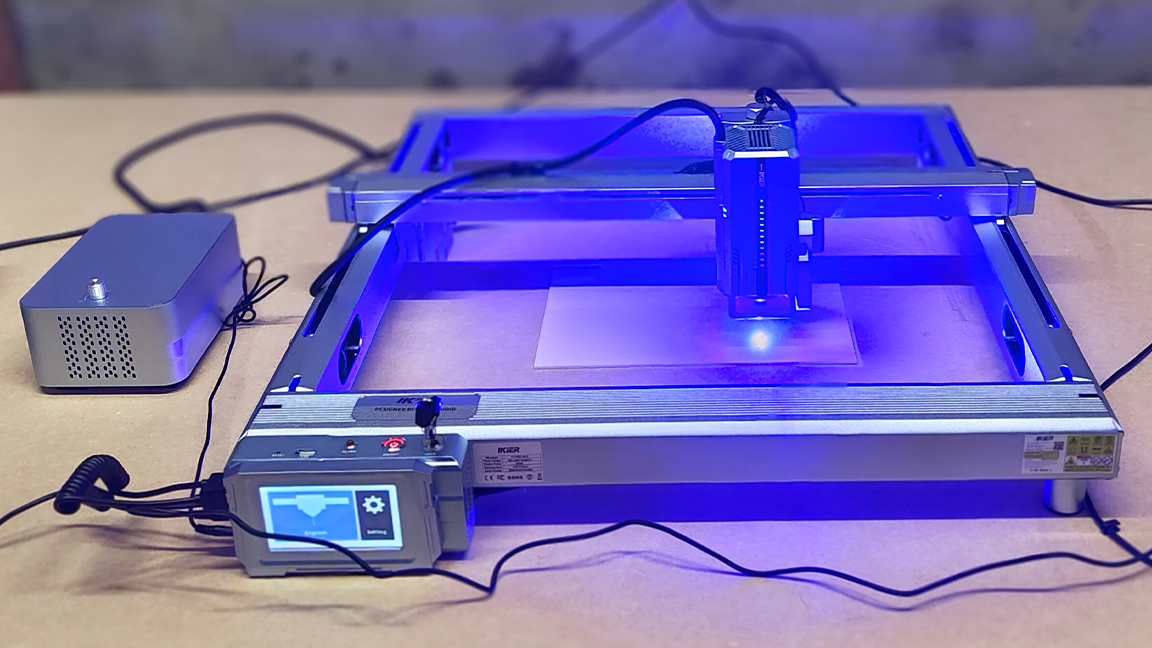
Specifications
Reasons to buy
Reasons to avoid
30-second summary: If you're looking to do a lot of engraving in a short space of time, the IKIER K1 Pro Max has much to offer. The engraving speed of the IKIER K1 Pro Max can reach up to 900mm/s, which is significantly faster than other machines on the market.
Price: The IKIER K1 Pro Max costs $1,999 / but it's currently reduced to $1,199.
Features: Usefully, IKIER’s intelligent Z-axis features help you achieve autofocus by automatically measuring the distance to the object and adjusting the focus. An automatic sinking feature helps you to cut thicker materials. The K1 Pro Max also boasts an advanced automatic power failure recovery system that remembers the engraving position. When the power comes back on, it uses an algorithm to quickly continue engraving from where it left off.
Design: Being an open-frame laser device has its advantages, as you can get more manual with setup and position items for engraving in a large, open space. It's an older-fashioned approach, but the air assist diminishes scorching and mess, but it's not a device to use in the home like the Glowforge Aura or Spark.
It's versatile, too, thanks to the 48W to 24W Gear Switching Module. When you need to cut, you can use the 48W gear, and the laser power is fully turned on. This allows you to cut 25mm wood, 19mm black acrylic, and 0.3mm stainless steel sheet with one pass. When you need to engrave, switch to the 24W laser gear, and the engraving is more precise. It can directly carve coloured patterns on mirror stainless steel, ceramics and opaque glass.
Pain Point: When I reviewed the IKIER K1 Pro Max I found the brand's own app to be fairly useless so had to use LightBurn, which comes with a subscription cost. Unlike Glowforge and xTool models that use bespoke apps, the IKIER needs more experience to get the best from it – this is not a laser engraver for beginners.
Read the full review: IKIER K1 Pro Max

This is a very manual laser engraver and cutter compared to other new machines from the likes of xTool and Glowforge, but it's powerful machine. The fact it can cut wood around 20mm deep is incredible, and its speed and accuracy is equally impressive. I'd say it's mainly a machine for experienced users who have knowledge of LightBurn.
Also tested
LaserPecker 4
We reviewed this model back in 2023, but there has since been an upgrade in the form of the LaserPecker 5 model (number 7 on this list).
The Pecker 4 is a unique dual-laser setup, offering engraing, scoring, and cutting in one project. But newcomers to laser engraving might have a hard time with this one, thanks to a confusing app experience and poor software support.
See our 3.5-star LaserPecker 4 review.
How to choose the best laser cutter
The best laser cutter for you will depend on what you want to use it for. You'll need to decide if you want a diode or CO2 laser, as both of these types of laser cutters work on different materials to different degrees. Diode lasers are more affordable, but the cheapest can only engrave organic materials like wood and paper. CO2 lasers can etch any organic material and all acrylics, including clear acrylic, but they're more costly.
As a rule, CO2 laser machines like the xTool P2 and Glowforge Pro are designed for large, often complex or multiple projects and are aimed at professionals and studios. In comparison, diode laser machines like the Glowforge Aura or xTool M1 are smaller, cleaner and good for the home, making them excellent for crafters.
Think about the size of your workshop too, if you're using a laser cutter at home then you'll likely want something more compact and easy to store when not in use. If you have a larger space to work with then this will of course be less of a concern.
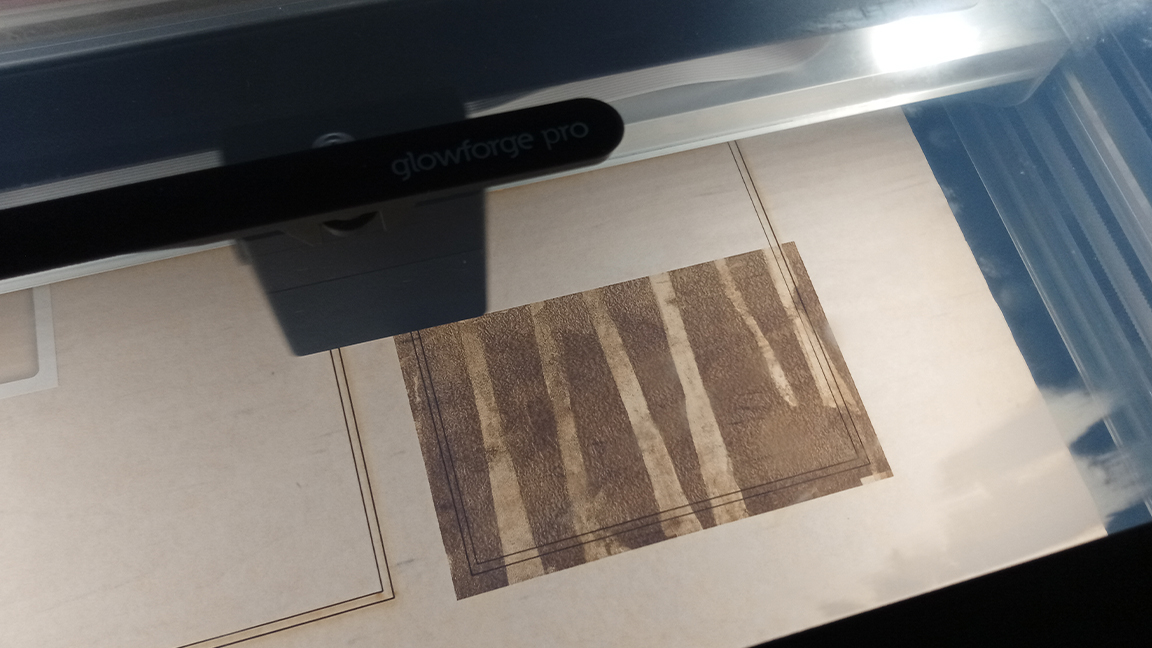
Another thing to consider is speed and accuracy, especially if your aim is to mass produce a product to sell within a limited time. And you'll need to consider how much physical space you have for a machine. Open-frame laser cutters can often be placed on top of large items, while fully enclosed lasers usually demand a dedicated space. You'll also need to consider if the enclosed laser you opt for has a pass-through door for working on larger projects.
Also, bear safety in mind. A laser that can burn wood can burn your skin and damage your sight. Open-frame laser cutters can be cheaper, but an encased machine is safer. Often safety devices, such as ventilation, are sold as optional extras to par with your laser cutter and keep prices down. There are some accessories that can be shared between tools and some can be picked up at a hardware store or solved with DIY.
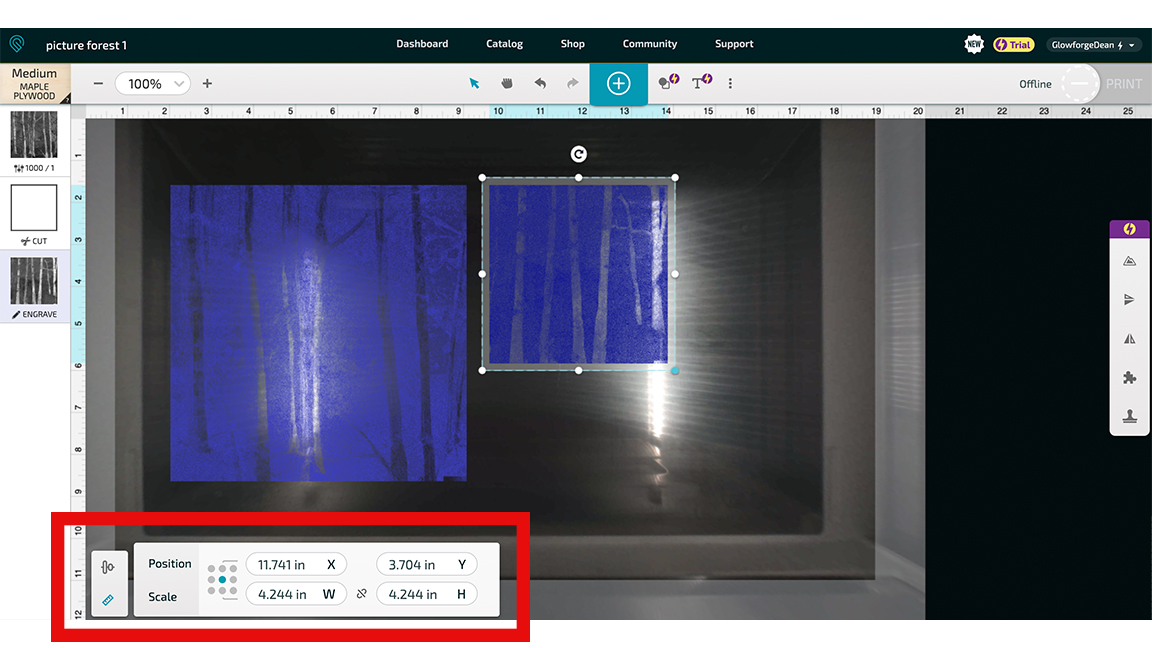
The software compatibility of a laser cutter is another selling point. Cheaper laser cutters often require free or paid third-party software like LaserGRBL, which is quite basic, or LightBurn, which is excellent and is the standard software but costs $60 for an annual licence. Brands like xTool and Glowforge have their own software for free, and from my experience, Glowforge has the best app of all the laser machine brands I've tried.
Another consideration should be the tech used to position and focus on materials. The easiest to use are enclosed machines that use built-in cameras for auto-focusing as well as positioning. If you're using an open-frame laser cutter you can attach a camera and link this to LightBurn. Some new machines, like the xTool S1, use new software algorithms for positioning and focusing, but it's not quite as good as using cameras.
You'll also need to consider your budget. If you're going to be monetising this skill, then pushing your budget as high as possible makes sense to get the best end product in the fastest time, and with the lowest usage costs. It is vital to consider the cost of replacement parts – you don't want to find yourself unable to keep the machine running.
How we tested the best laser cutters
✅ We focus on tech for all kinds of creative work
✅ Our reviewers test products in real-life scenarios
✅ We take feedback from working designers
✅ Dozens of craft and cutting machines tested in the past two years
To choose my picks of the best laser cutters and engravers, I tested and reviewed the products just like you'd use them. First I surveyed the market and the specs of the various laser cutters available from reputable brands. I then brought in the best machines for hands-on testing, creating projects as well as using the same designs across all machines for engraving and cutting – in my case it's the Creative Bloq logo as well as complex Christmas decorations (which everyone makes).
For my tests, I used the machines to cut, engrave and score a variety of materials over a number of days, testing out all of the capabilities promised by manufacturers to make sure there were no false promises. We evaluated the machines for accuracy, speed and support for materials.
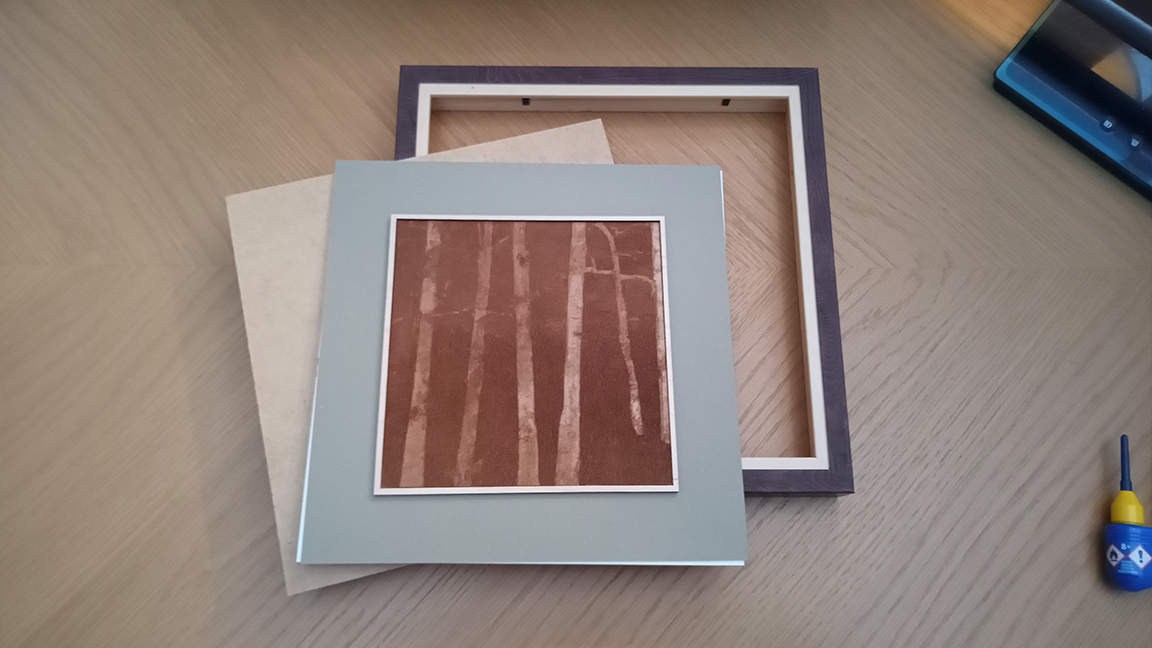
I also considered ease of use, size and value for money in order to provide options for different needs, including more economical laser cutters and options that can fit on a desk.
When I ask a freelance writer to review for us they are tasked with reviewing using the same criteria so we have a standard across all reviews. If we've not directly reviewed a laser machine, because it's new and we're waiting on a model to rate, then we turn to our sister sites like TechRadar for guidance.
For more details of our processes, see our guide to how we test and review at Creative Bloq.
What we look for
When choosing the best laser cutters and the best laser engravers for this guide from the product we've tested, I selected machines that have clear use cases, be it for beginner or professional crafters and small businesses. Overall, I chose machines that have good build quality, work accurately and safely and provide advantages in terms of tools and ease of use.
FAQs
What is a laser cutter?
A laser cutter is a device that creates patterns, shapes and designs in materials such as wood, glass, paper, metal and plastic, by cutting into them with a high-power laser. The precision of a laser makes for a clean cut and smooth finish. Laser cutting has been used for many decades in large-scale manufacturing, but more recently laser cutters have become more affordable and are increasingly used by hobbyists, schools and small businesses.
The same laser in the device can be used to engrave imagery onto various materials such as card, wood, leather, various metals, some acrylics, glass and sometimes stone and concrete. The more powerful the laser, the thicker the material it can cut. If you only want to engrave, a less powerful and therefore cheaper laser might fit the bill.
What can I make with a laser cutter?
You can create unique crafts to sell with a laser engraver, as well as bring prototype ideas to life in a physical format. Not to mention engraving interesting promotional materials (such as metallic business cards), or intricately cutting bespoke items that can integrate into larger crafting projects.
What are the different types of laser cutter?
There are three main types of laser cutters. CO2 laser cutters use electrically-stimulated CO2 and are typically used for cutting, boring and engraving. This is the most common laser cutter to be used by hobbyists and makers. Crystal laser cutters use nd: YVO and nd :YAG, and are high-powered, so they can cut through thicker materials. Fibre Laser Cutters use fibreglass and can work with both metal and non-metal materials.
Do I need to spend a lot of money on a laser cutter?
Not so much any more. The Glowforge Aura is regularly below $1,000 on the Glowforge website, while the rival xTool M1 is also often around $999. Both are excellent machines, aimed at home crafters.
One thing of note, too, is that xTool has a new machine trade-in system, so you can replace your old xTool laser cutter and engraver and upgrade to a new one for up to $500 / £500 less. You needn't send back your old diode laser machine either, just proof of ownership.
Which materials can I cut with a laser cutter?
It depends on which specific laser cutter or engraver you own, but in general, laser cutters are compatible with a wide variety of materials that include:
• Metal
• Wood
• Leather
• Paper
• Acrylic (PMMA)
• Cork
• Materials like Cotton, Silk, or Wool
• Cardboard
• Plywood
• MDF (Medium Density Fiberboard) sheets
• Plastics (but only some)
What kind of materials can't be cut with a laser cutter?
There are certain materials that you should never cut with a laser cutter. These include PVC vinyl, pleather or faux leather, and ABS polymer, which is commonly used in 3D pens and 3D printers and can emit chlorine gas when cut.
Never cut laser-cut polystyrene foam, polypropylene foam, or HDPE (a plastic used to make milk bottles) – as these will all catch fire.
There are many other materials that should not be laser-cut, so always read the instructions carefully.
Daily design news, reviews, how-tos and more, as picked by the editors.

Ian Dean is Editor, Digital Arts & 3D at Creative Bloq, and the former editor of many leading magazines. These titles included ImagineFX, 3D World and video game titles Play and Official PlayStation Magazine. Ian launched Xbox magazine X360 and edited PlayStation World. For Creative Bloq, Ian combines his experiences to bring the latest news on digital art, VFX and video games and tech, and in his spare time he doodles in Procreate, ArtRage, and Rebelle while finding time to play Xbox and PS5.
